Living and traveling in Korea


How To Visit The Blue House In Seoul: A Guide To Cheongwadae
Did you know you can visit the Blue House in Seoul now? Actually, there were tours before, but now you can see more. Formerly the president’s home, the newly elected Korean president no longer lives there, so they’ve opened it for people to see for the first time in 74 years. If you’re interested in seeing Korea’s government buildings, you should go take a tour of The Blue House, or Cheongwadae (청와대) as it’s called in Korean.

Citizens and tourists can see the Blue House but the process to see it is a bit different, so make sure you read carefully. If you’ll be visiting downtown Seoul soon, this is definitely something you should see. Who knows? Maybe the next president will move back in and it won’t be public anymore. It might be your only chance!
How To Get There
The importance of cheongwadae opening, notable south korean presidents, what to see, what to do nearby.
(This post contains affiliate links, which means I receive a certain percentage of a sale if you purchase after clicking at no cost to you. Thank you for your support.)
Situated snuggly behind Gyeongbokgung Palace with Bugaksan behind it, you can easily add this to a day in downtown Seoul.
Address: 1 Cheongwa-daero, Jongno-gu, Seoul (서울 종로구 청와대로 1) By Public Transportation: Take Line 3 to Gyeongbokgung station, exit 4. Then, take bus 1711, 1020, 7018, 7016, 7022, or 7212 to Hyoja-dong, and it’s a short walk from there.
Alternatively, you could walk through Gyeongbokgung Palace and exit out the back gate to find the Blue House as well. Make sure to check when you buy tickets that the back gate will be open by the time you get there though.

Days: Wednesday – Monday
Hours: 9:00am ~ 6:00pm
Admission: Free
How to visit: Currently, reservations are required to visit the Blue House. However, if you’re a tourist you cannot make a reservation on the website. Keep reading though because you CAN still visit.
If you’re a citizen of South Korea or a resident of South Korea:
- You can register on the Cheongwadae website in order to visit.
- Registration can be made up to four weeks in advance.
- Up to 6 people can be registered per reservation.
- A local mobile number is required to verify your identity.
- Website: https://reserve1.opencheongwadae.kr/
If you are a tourist visiting South Korea:
- There are two times a day when 500 walk-ins are allowed to enter and this is when you can get in.
- Walk-in times: 9:00am & 1:30pm
- Note that you should arrive at least a half hour in advance. On popular days, the line can get long fast.
- You must bring your passport to show at the ticket booth to enter.

Because every South Korean president lived here, The Blue House was always pretty closed off to the public. There were special events held sometimes, but it was much like the American White House where few people have seen the interior. The new President Yoon Suk-Yeol, who was elected in 2022, decided not to live there and opened the residence up to the public.
Opening up Cheongwadae was a controversial decision but President Yoon strongly voiced his opinions that the Blue House was a symbol of Korea’s legacy of imperial presidencies. He vowed to return the compound to the public and move his office to the defense ministry building in Yongsan. It could be that this tourist attraction is limited to this president’s 5-year term though, so you should go see it while you can!
History of the Blue House
The land that the Blue House is on was originally a royal villa in Hanyang, the capital of the Goryeo Dynasty. Once Joseon took over and Gyeongbokgung Palace was built, it became the back garden of the palace. During the Japanese occupation, they built a government administrative building there.

When the Republic of Korea was established in 1948, the first president Syngman Rhee renamed the building to “Gyeong Mu Dae” and he used it as an office as well as a place of residence. The fourth president of South Korea, Yun Bo-seon, changed the name to Cheongwadae, which literally means “The Blue House” after the signature blue tiling on the roof.
All of the Korean presidents have used this for both their residence and official offices until the latest one, President Yoon Suk-Yeol. After a Presidential decree, The Blue House was declared a public park this year, 2022, and opened to the people for the first time since it was built. You can imagine how excited citizens and tourists have been to visit. There is a limit of 6,500 people that can enter every two hours by reservation for this reason.

- Rhee Syngman (이승만) – The first president of South Korea
- Yun Bo-Seon (윤보선) – President with the shortest term at 1 year and 224 days.
- Park Chung-Hee (박정희) – The longest-serving president at 15 years, 10 months, and 10 days. This is about 3 times the length of a current presidential term in Korea.
- Roh Tae-Woo (노태우) – The first president of the sixth and current Republic of Korea.
- Park Geun-Hye (박근혜) – The first female president of South Korea, also inspired the largest weekly protest in South Korean history with 10 million people joining.
- Moon Jae-In (문재인) – Stepped over the demarcation line at JSA and similarly welcomed Kim Jong Un to step into the south marking the first time since the Korean War a North Korean leader had entered South Korea.
Walking into Cheongwadae, you can feel the excitement of everyone there to see a building that’s been closed for so long. It feels like an incredibly fancy building, and it’s always cool to see cultural sites because you can feel all of the history in a place when you walk around.

Main Office Building (청와대 본관)
This is probably the most recognizable place in all of Cheongwadae. It’s the building that has the blue tiles on the roof that gave the property its name. It has been used as the official presidential office since it was built in 1911 to 2022. Since it’s been opened to the public, it’s been made into a museum of the lives of presidents while they used this space.
Each room in the building shows a different purpose for it, while at the end there’s a display of all of the First Ladies of South Korea. This is also the most popular building, and the line tends to be long. If you want to see it, it should be either the first or last thing you visit while at Cheongwadae.

Yeongbingwan (영빈관)
Yeongbingwan is the state reception hall. This was the place where the president would host guests from other countries. There would be traditional dance performances and banquets here to welcome other heads of state.
Presidential Residence (대통령관저)
This was the home of presidents and their families while they were in office, kept separately from the main building. It includes three sections: Bonchae, which is the actual living space; Byeolchae, which is the reception space, and Sarangchae. This last room is traditionally used as a study by the men of the house.

Sangchunjae (상춘재)
Designed similar to the Presidential Residence, Sangchunjae is a place where traditional Korean artwork is displayed to guests. It’s also a place where receptions and unofficial meetings are held.
Nokjiwon (녹지원)
This is a massive outdoor space that’s perfect for sitting with a picnic blanket and relaxing on a nice day which they might start allowing any day. There are a lot of different trees here, including commemorative trees planted by each president.
Chunchugwan (춘추관)
Built in 1990, this building is the newest addition to Cheongwadae. It’s used for official presidential announcements and for the Press Secretary to give news briefings. The name comes from the record-keeping office of the Goryeo Dynasty.
Chilgung Palace (칠궁)
The name of this building literally means “Seven Palaces”. It’s the place where the spirit tablets of the seven concubines who birthed kings of the Joseon Dynasty are enshrined. According to Confucian beliefs, it’s incredibly important to respect your elders in life and honor them in death, so it’s a necessity for their spirits to be preserved in tablets like this. If you’re wondering where everyone else’s spirit tablets are, you can visit Jongmyo Shrine , which is nearby. That is where all of the kings and queens of the Joseon dynasty’s spirits are preserved.
So you made it out to the Blue House and you want to spend the day in the area. Well there’s plenty to do!
Tongin Market

This is a really fun traditional market with a bit of a twist. You can buy traditional style coins and then shop around from vendor to vendor getting food but instead of getting big bowls of soup and platefuls of chicken, you get mini-versions of everything which is ideal if you want to sort of taste test the goods and just see what you like. Most markets serve up great food but it’s big serving sizes and if you don’t know what you’re getting, you might be afraid to try new things. This is a great way to try a lot of tiny dishes of Korean market food. See what you like!
Find out more about Tongin Market
Gyeongbokgung Palace

The largest of the Korean palaces sitting right in front of the Blue House can’t be overlooked of course. Where the Joseon Kings sat and where the presidents of Korean history sat? See them both in the same day if you can. Or the same night. Throughout the year, there are special night viewings of the palaces downtown which can’t be beat. If you’ve seen Gyeongbokgung by day, try to see it by night this time.
Find out more about Gyeongbokgung Palace
Seoul Museum of Modern and Contemporary Art

The Seoul MMCA is a fabulous art museum just east of Gyeongbokgung Palace. There are always amazing exhibitions there and the layout itself and buildings that make up the museum are also really interesting too. Stop in and see what’s going on when you’re in the area.
Find out more about the Seoul Museum of Modern and Contemporary Art
Did you like this post? Pin IT!

You May Also Like

Hongdae & The Street Art To Find There

25 FREE Things To Do In Seoul

HiKR Ground: Immersive Tourism Space In Seoul, Korea
Thanks for providing the online reservation link for residents. Very helpful!
Stephanie von Wellinghoff
Many thanks Alexis, I am so grateful for this very insightful story which helped me a lot. I was lucky to get in, and can only warmly recommend visiting the Blue House. What a wonderful house, and what a proud and culturally rich nation!
Thank you for the info inside your article. Do vistors still need to make online reservations for visiting Blue House now? Where is the gathering place, at the Cheongwadae gate or at the east parking lot besides Gyeongbokgung ? Thank you. Vera
Leave a Reply Cancel reply
Your email address will not be published. Required fields are marked *
Sign me up for the weekly updates newsletter!
This site uses Akismet to reduce spam. Learn how your comment data is processed .
SEOUL - north | SEOUL - south
Day Trips from Seoul | Busan | Best Collections
🌸Festivals ( Seoul • Busan )

Cheong Wa Dae (Blue House) 청와대
서울특별시 종로구 청와대로 1 (세종로) | 1, Cheongwadae-ro, Jongno-gu, Seoul
Online booking & on-site application available for touring the presidential compound.
Gyeongbokgung Station (line 3, exit 4). 15 mins walk.
Anguk Station (line 3, exit 1). 20 mins walk.
www.opencheongwadae.kr
Located with Bugaksan Mountain in the background, Cheong Wa Dae (or Blue House) is the official office and residence for Korean Presidents from 1948 to 2022 . Since the establishment of the Republic of Korea in 1948, it has accommodated President Syngman Rhee to President Moon Jae-in .

The Opening of Cheong Wa Dae to the Public in 74 years
On 10 May 2022 , f ollowing the relocation of the presidential office to the defence ministry building in Yongsan District, Cheong Wa Dae was opened to the public for the first time in 74 years, on the day of inauguration of President Yoon Suk-yeol .

Cheong Wa Dae Tour
Visitors can freely tour Cheong Wa Dae by making an appointment online or via on-site application. Admission is free.
There are 3 entrance gates to Cheong Wa Dae, namely the Yeongbinmun Gate (west), main gate (center) and Chunchumun (Spring & Autumn) Gate (east).
1. Online Application ( reserve1.opencheongwadae.kr )
09:00 - 18:00 (last entry at 17:30).
Closed on Tuesdays.
First come first serve.
Reservation can be made up to 4 weeks in advance.
Up to 6 participants allowed per individual reservation.
Local mobile number required for identify verification.
2. On-site Application
Issuance at the General Information Center of the Main Gate.
09:00 & 13:30.
Maximum of 500 visitors per session.
Recommended option for foreign visitors to South Korea.
No smoking allowed inside Cheong Wa Dae.
In case of rain, access to the interior of the major buildings may be restricted for damage prevention.
Wearing a mask outdoor is strongly recommended, mask must be worn indoors though.

Map of Key Attractions at Cheong Wa Dae

1. Main Office Building - The central building used for the office of the President and reception of foreign guests.
2. Yongbingwan (State Guest House) - The building where large-scale conferences and official events for foreign state guests were held.
3. Presidential Residence - The place where the president and his family live.
4. Sugung Site - The present site of Sugung was the site of Sugung that protected the royal palace at that time.
5. Sangchunjae - A venue for ceremonial events and informal meetings to introduce Korean style houses to foreign distinguished guests visiting the Blue House.
6. Nokjiwon Garden - The most beautiful place on the grounds of the Blue House where 120 species of trees and commemorative plantings of past presidents are located.
7. President's Office - The Office of the President of the Republic of Korea.
8. Chunchugwan (Spring & Autumn Hall) - Built to be used as a press conference venue for the President and as a reporting room for reporters.
9. Mugunghwa (Rose of Sharon) Garden - A public rest park.
10. Chilgung Shrine - The place where the tablets of concubines who given birth to a King during the Joseon Dynasty are enshrined.

Hike the Once-forbidden Bugaksan Mountain (Southern)
With the opening of Cheong Wa Dae, the southern hiking trails of Bugaksan Mountain (also known as Mt. Baegak) behind Cheong Wa Dae was also opened to the public for the first time in 54 years , on 6 April 2022.
The short loop trail starts from behind the Presidential Residence back to Cheong Wa Dae compound. Key highlights along the trail include the Stone Buddha Seated on a Square Pedestal from Gyeongju and Ounjeong Pavilion .

💡 Map of Bugaksan Mountain (Southern) Hiking Course
For those keen to explore the southern trails of Bugaksan Mountain more extensively, you can enter/exit the trails via Samcheong Information Center or Chigung Information Center , located outside Cheong Wa Dae.

Road to Cheong Wa Dae in Autumn
During autumn , the road leading to Cheong Wa Dae, along the stone-wall of Gyeongbokgung Palace (Sinmumun Gate) turned into gorgeous shades of yellow from the ginkgo trees. A lovely sight to behold on the relaxing walk.

Map of Getting to Cheong Wa Dae

KoreaToDo TOP PICKS - Tours, Activities & Discount Tickets
➥ Handpicked experiences by KoreaToDo for their uniqueness, value, popularity, price competitiveness and at times, tedious to reach by public transport.

Korean Tea Culture Experience & Tasting Session
Korean healing tea course

Korean Folk Village, Suwon Hwaseong & Suwon Nammun Market Day Tour
Authentic cultural experience

Nanta Show Seoul @Myeongdong / Hongdae
Korea's longest running show

4G Pocket WiFi (KR Airport Pick Up) - KT OLLEH (Unlimited Data)
max 3 devices / 24 hrs pick up

Cheongwadae Blue House & Gyeongbokgung Palace Walking Tour
former presidential residence

Private Transfer: Incheon Airport (ICN) to Seoul (1-3 or more pax/car)
Myeongdong, Hongdae, etc

DMZ 3rd Invasion Tunnel & Gamaksan Suspension Bridge Day Tour
150m long bridge across valley

Korea Rail Pass (KR PASS): KTX Bullet Trains to Busan & others (2, 3, 4 or 5 Days)
instant pass & tourist exclusive!
♔ KoreaToDo recommends Klook.com , Asia leading in-destination service provider.

❀SEASONAL HIGHLIGHTS❀ Handpicked Experiences

Cherry Blossom Hunting Day Tour
29 Mar - 29 Apr 2024
2-3 most beautiful cherry blossom spots

Jeonju Hanok Village, Wansan Park & Gakwonsa Temple Day Tour
8-23 Apr 2024
King Cherry Blossom Festival

Romantic Cherry Blossom Random Day Tour
22 Mar - 21 Apr 2024
2-3 cherry blossom destinations

Taean Tulip Festival, Kkotji Beach & Strawberry Picking Day Tour
12 Apr - 7 May 2024
World's top five tulip festivals!

Azalea-Cherry Blossom Festival & Gwangmyeong Cave Day Tour
28 Mar - 12 Apr 2024
vibrant colors of spring!

Pink King Cherry Blossom Tour (Spring Flower Festival, Gaesimsa & Munsusa)
14-29 Apr 2024
king cherry blossoms are larger & denser
Other KoreaToDo Collection that you may like:
National Museum of Korea - The largest museum in Korea, free admission & connected to subway
Yonsei University - Prestigious university with Gothic-style buildings
Gwanghwamun Square - A landmark national square with statues of King Sejong & Admiral Yi Sunshin
Still looking? Explore KoreaToDo handpicked collection of:
Top 9 Scenic Hiking Spots & Walking Trails in Korea
Seoul - North of Han River
Seoul - South of Han River
- Skip to primary navigation
- Skip to main content
- Skip to primary sidebar

How to Visit The Blue House in Korea (Cheongwadae)
Last Updated: Nov 11, 2023 by Max · This post may contain affiliate links · Leave a Comment
One of Korea’s biggest mysteries is Cheongwadae — also known as the Blue House in Seoul. It’s quite a secluded place, and was heavily restricted for a long time. The only thing passersby could see were the buildings and pavilions that had the iconic blue tiles formed to honor traditional Korean architecture.
For 74 years, it served to house the South Korean president, and only they were able to enter the building. However, special access was granted to some of the president’s trusted colleagues, as well as special foreign delegates who had business to do in Korea.
Visiting the Blue House in Korea can teach you about Korea’s extensive political and cultural past, and how it has shaped the country into what it is today.
Cheongwadae is conveniently located in the heart of Seoul, and the nearest station is the same one that directly takes you straight to Gyeongbokgung Palace, another political heritage site that offers a free guided tour on all days except Tuesdays.
Note that the guided tours of Cheongwadae Seoul are only given to those who have made prior reservations. If you wish to reserve a slot, please visit their official website . Also, keep in mind that the Blue House is closed on Mondays and special holidays.
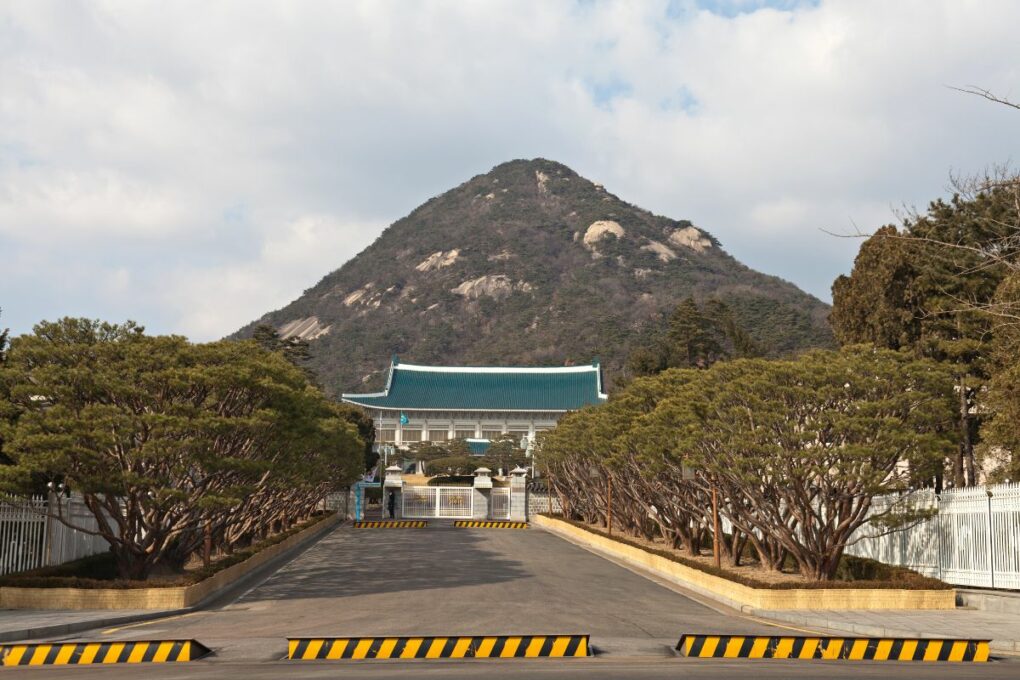
Getting to The Blue House
What is cheongwadae , history of the blue house in seoul, how to visit the blue house as a tourist, tips for visiting the blue house, seoul blue house faq.
To get to the Blue House, the closest subway station is Gyeongbokgung Station (Line 3). You can also ride the Seoul Autonomous Bus , which has a stop outside Gyeongbok Palace, and then the route eventually takes you to the Hyojaro entrance of Cheongwadae.
Note that these buses run from 9AM to 5PM. Beyond 5pm, you can ride a taxi from the Seoul Station and the fee is just ₩6900. There are three notable landmarks near Cheongwadae other than Gyeongbokgung Palace.
We have National Museum of Korea, which contains the best collection of Korean history and art, followed by Bukchon Hanok Village, a traditional neighborhood that has preserved its traditional charm, and finally Namsan Tower, a communications tower that is also a skyscraper that offers the best views of Seoul.
As some people may initially think, the Blue House is definitely not a rip-off of the US White House. But it definitely fulfilled the same purpose; that is, until the current president decided to change the site into a public park, and moved all operations to a military facility in Yongsan-gu.
So, if it’s not a parody of the White House, then where did the Blue House get its name? It comes from the Korean nickname for Cheongwadae, which has a vivid blue-tiled roof that has remained unchanged throughout the years. Several renovations were made to improve the presidential home, but the roof has stayed on over the years.
The blue tiles go all the way back to the Goryeo dynasty, and I’m not a historian, but during my research I learned that it was a belief during this period that a home with a blue roof is a symbol of wealth. Also, if you’ve seen the White House before, and then came to visit Cheongwadae in Seoul, you may be surprised that it’s not a single building, but a complex of multiple structures.
The Blue House is actually three times larger than the White House. It’s also in a pretty ideal location, and is just a convenient walk away from several historical landmarks, like Gyeongbokgung Palace and Bukchon Hanok Village.
One of the most notable features of the Korean Blue House is the elegant mix of traditional Korean architecture with modern elements. These are beautifully incorporated into the main building, its surrounding pavilions, and the fountain at front.
If you also take a stroll in the large garden, you get a clear view of the Bukhansan, flanked by the Naksan and the Inwangsan mountain ranges. If you plan to visit, make sure you have secured a reservation on the Korea Blue House website first, although you can just walk in as long as you do not have plans to join the tour.
Visitors are required to wear formal attire like a suit, but you can also rent a hanbok for a day and still be considered suitable. Moreover, if you wear a hanbok, you can get into the nearby Gyeongbokgung Palace for free.
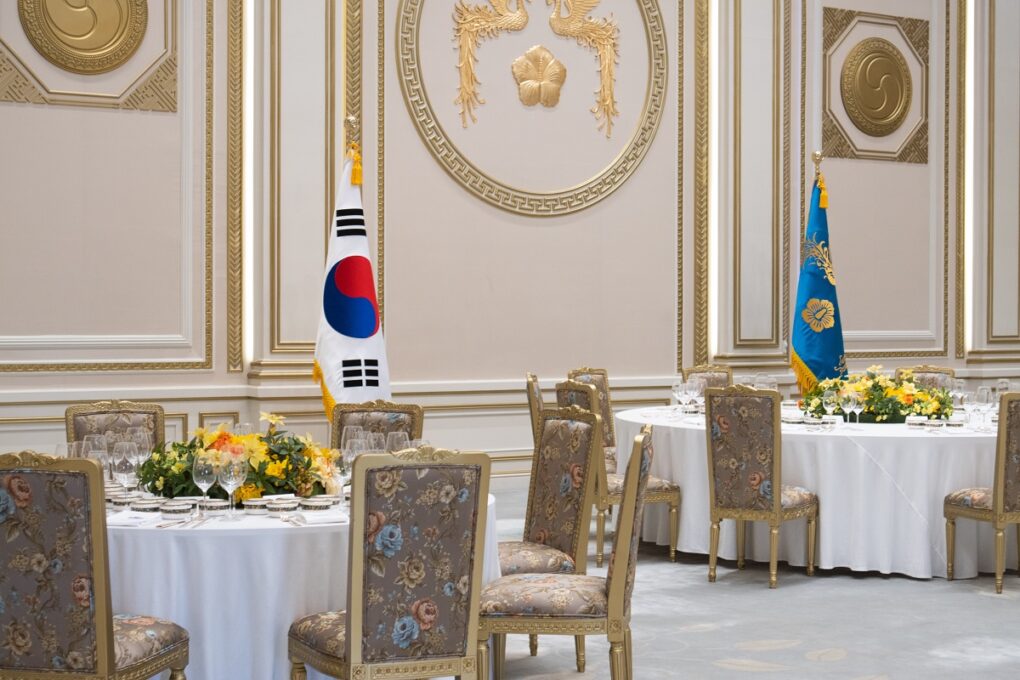
The Blue House originally was a villa built by the royal family during the Goryeo Dynasty (918-1932), and was later considered during the Joseon Era (1392-1910) to be a site so sacred that no king could dare to enter.
In the mid-19 th century, it was turned into a military training ground called the Gyeongmudae , and was also wide enough to host the gwageo , or the civil service examinations. When the Japan-Korea Treaty was imposed on the Korean Empire, a building was erected to house the Japanese Colonial Government General throughout the Japanese occupation.
After defeating Japan in 1948, it became the official residence of Korea’s first president.
For years it kept the name Gyeongmudae, until it was officially changed into Cheongwadae, following the inauguration of Yun Boseon during the Second Republic. Park Chung-hee, the controversial president that served for 18 years until his assassination in 1979, was largely responsible for adding structures to the lot.
The gregarious main building, along with several embellishments, were completed during the sixth president Roh Tae-woo’s term after the successful 1988 Summer Olympics. More sections were made to accommodate the incoming foreign leaders and delegates that were impressed by Korea, and thus came for state visits.
Back when it served as a presidential home, tours were allowed in limited areas only. It was only just recently that people were granted full access; and this was merely because the president-elect Yoon Suk-yeol decided to relocate the presidential office.
It was rumored that the reason for moving was “ bad feng shui ”, but the president also argued that making the former home into a public park is a touching gesture that promises open communication and transparency with the people.
Currently, the president has opted to commute from his home to the new office , built in a Defense Ministry complex near Yongsan Park. Now that you can freely explore areas that were not open to the public before, there were some recent additions to the tour that you will for sure enjoy.
Some of the memorable places you encounter are the Cheongwadae Bongwan , or the former executive office of the president, the Yeongbingwan , or the state reception hall large enough to hold banquets, and three sections of the Daetongryeong Gwanjeo , where the presidents and their families used to live.
The most interesting part of the tour, however, is the Chilgung Palace , which literally means “Seven Palaces”. Here, you can find seven spirit tablets of the concubines who birthed seven notable Joseon kings.
Other interesting spirit tablets can be found in Jongmyo Shrine , which is in a different location entirely, but is still near that area. A fun tidbit that you should know is that there is a once-secret trail leading to Bugaksan Mountain behind Cheongwadae.
It’s somewhere near the Presidential Residence, and along the short trail, you will discover a Stone Buddha seated on a square pedestal. This is just mentioned in passing during the tour, so once it ends, you should definitely check it out.
Expect the tour to last around an hour and thirty minutes. Dress appropriately to avoid any snags, and remember that the event starts strictly on time, so report to the Public Information Hall at least 20 minutes before the set time.
Taking pictures of the area is permitted, but only at designated places indicated by the tour guide. You are also expected to honor privacy, so if there are events going on, do not take pictures unless allowed to do so.
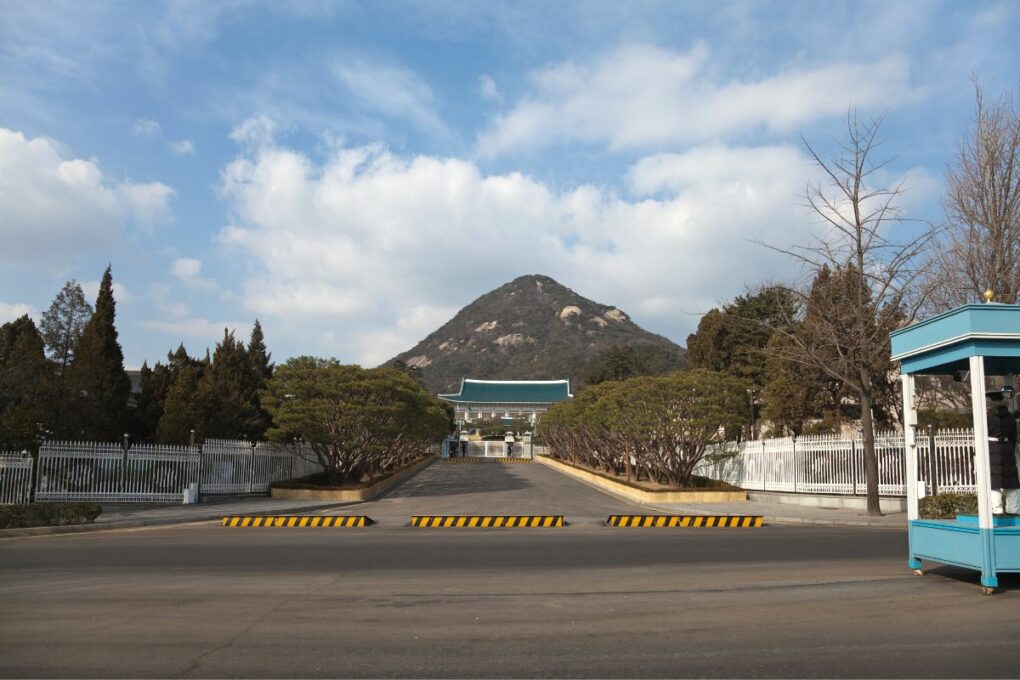
To visit Cheongwadae Seoul, make a reservation on the official website ; simply click “Visit Cheongwadae” on the homepage to get started. Then in the drop-down menu, click “Visit for Tourists” and fill out the online reservation form and state your preferred visit date.
Within the day, a confirmation of your reservation will be sent to your email (so if you haven’t received it, check your spam folder). Note that, to be able to register on the official website, you need to have a local mobile number, which you can get by purchasing a sim card at Incheon Airport .
You can also register on-site by heading over to the General Information Center of the Main Gate, but only a maximum of 500 visitors are allowed per session. This is the best option you can take if you don’t have a Korean phone number.
Make sure to bring important IDs for verification purposes (like your passport or Alien Registration Card). But still, to be able to join the tour, it’s best if you secure a reservation online ahead of time, because about 10,000 people come to see the Korean Blue House weekly.
If you are not proficient in hangeul (the site is in Korean), and the staff handling the registration may not speak a lick of English, you should download Papago (find the download link here). This app is the most accurate translating tool, commonly used by locals to communicate with foreigners, along with a few other common apps .
Before coming to the Blue House, you must keep in mind that this is an official landmark that requires visitors to dress formally or in traditional Korean clothing. Avoid revealing outfits and shorts, in particular. If you violate the dress code, be understanding as to why they cannot let you in.
Arrive to the meeting place at least 20 minutes before your tour starts. They will not wait for you and will not let you join midway because you missed the instructions. The park is also pretty big, so never lose sight of your tour guide and follow their instructions.
Be mindful of your gestures and jokes, because certain jokes may offend locals who join you on the tour.
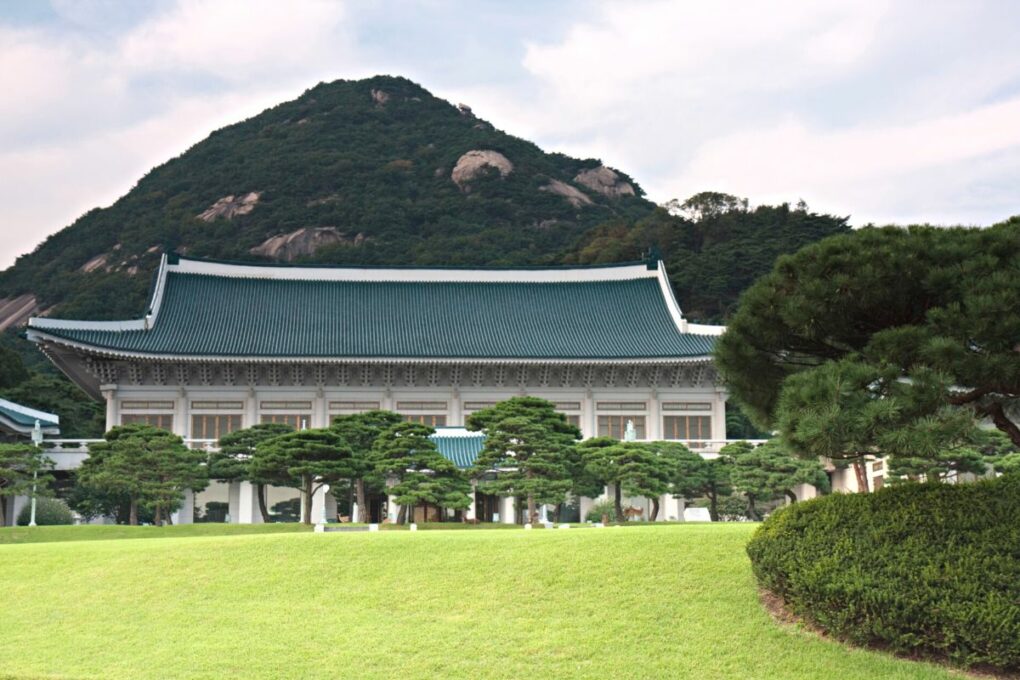
Why is the blue house so famous?
- The Blue House is known as the former residence of past South Korean presidents. It also has a vibrant blue roof curved elegantly on top of the main building, which has withstood the test of time. Tourists flock to this place to have an in-depth understanding about the presidents that shaped the country into what it is today, and admire the traditional architecture
Can you visit the Blue House in Korea?
- Yes, unlike before, Cheongwadae in Seoul is no longer limited to official delegations and invited guests. The scope of the tour has changed tremendously, and it now features areas that were off-limits to guests before. To join a Blue House tour, make sure you have secured a ticket online ahead of time, though you can always take your chances by arriving really early at the General Information Center.
Where does the South Korean president live now?
- Upon the inauguration of President Yoon Suk-yeol in May 2022, Cheongwadae was converted into a public park. For his office he now reports to the Defense Ministry Compound in Yongsan-gu, and has made arrangements to commute there from his house in Southern Seoul.
Has BTS been to the Blue House? - BTS has definitely been to the Blue House. In late 2018, former President Moon Jae-in invited the group to discuss their role as Cultural Ambassadors, after recognizing the impact their music has on the world and how their contributions have supported the nation in its economic growth and tourism.
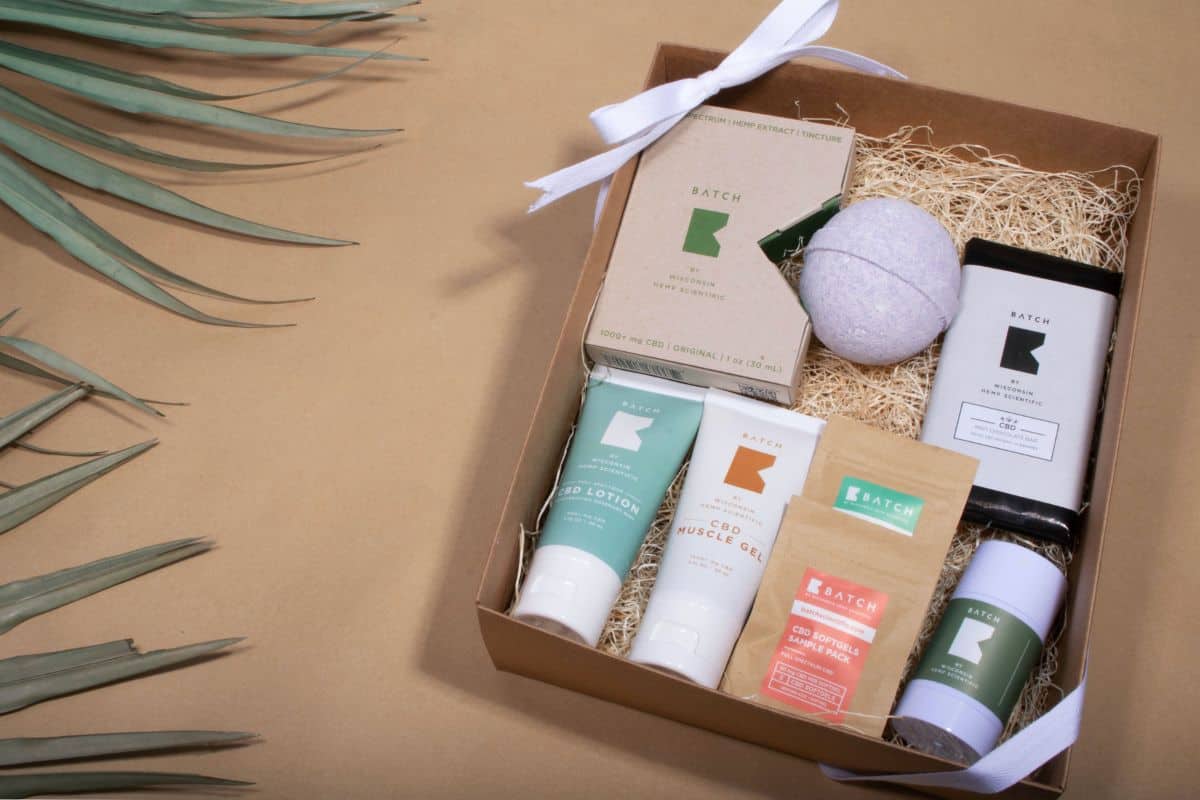
Sharing is caring!
Reader Interactions
No Comments
Leave a Reply Cancel reply
Your email address will not be published. Required fields are marked *
This site uses Akismet to reduce spam. Learn how your comment data is processed .
- Go to the menu
The Visit Seoul website uses cookies to enhance the user experience, improve the website, and more.
Continuing use of this website means that you agree to the use of cookies.
- Seoulite's Picks
- Exhibitions
- Smart & Safe Seoul Travel
- Facebook logo icon Instagram logo icon YouTube logo icon TikTok logo icon
Cheongwadae
Select a region.
Save travel information you're interested in according to the region to view in your favorites list later on.
SNS Share Content!
- Facebook Link
- Share to twitter
Cheongwadae, also known as the Blue House, is the Korean presidential residence. Located in central Seoul, visitors may visit Cheongwadae through an official tour. The presidential office, reception hall, and conference room are located in Cheongwadae's main building. The residence's grounds have a pond and gardens that reach to the foot of Bugaksan Mountain. Reservations for tours must be made in advance; reservations can be made as far as 6 months in advance and no sooner than 20 days before the desired tour date.
Directions Details
#Cheongwadae #Bukaksan #ExecutiveOffice #Gwanghwamun #BlueHouseTour #BlueHouse #President #Sarangchae #StudyRoom #Gwanjeo
Association recommendation information
- Gallery Kong Since its opening in 2005, Gallery Kong has showcased a wide range of globally famous photographers, greatly influencing the photography industry in Korea.
- PKM Gallery The PKM Gallery was established in 2001 and a range of art from diverse mediums can be found on display.
- Pogyeongseon Pogyeongseon is a whale restaurant - one of the few in Seoul. Try all of the 12 major parts of the whale, each of which has its own distinct shape and flavor. Choose from several different dipping sauces - red pepper paste with vinegar, sesame oil and salt, or aged anchovy sauce - depending on the cut of whale meat you are eating.
- Om Om is a Nepalese and Indian restaurant run by the manager of the Nepal Tourism Board. You can have a variety of curries and tandoori chicken, which is marinated in traditional spices for one day and baked in a tandoori oven. The smells and flavors of the dishes here are typical of Indian cuisine, although not as strong.
- 장기 폭염 예상 기간 프로그램 운영 중단: 7.23. ~ 8.11.
- 예약은 관광일 기준 최소 3일 전 까지 가능합니다.
- 3인 미만은 예약이 취소될 수 있습니다.
- 기존 등록된 예약 중 그룹별 정원을 초과하지 않는 예약에 한하여 1일 전 17시 까지 추가 예약 가능합니다.
- 다음달 예약은 전달 15일 이 후부터 가능합니다.
- 발열 또는 호흡기 증상(열, 기침, 가래, 근육통, 코막힘, 인후통 등)이 있는 경우 프로그램 참여를 삼가하여 주시기 바랍니다.
- 보호자가 동반하지 않는 만 14세 미만의 아동 관광객의 경우 현장에서 취소됩니다.
- 기상특보(폭염, 태풍, 호우, 미세먼지 등)로 인해 도보관광 운영이 어려운 경우 모든 예약은 일괄 취소됩니다. (발효 즉시 취소처리) ※예약 당일 기상특보를 상시 확인 바랍니다.
- 해설 진행 시 발생하는 안전사고에 대해서 서울도보해설관광 사무국과 서울문화관광해설사는 책임을 지지 않습니다.
- 한국어를 모국어로 사용하는 대한민국 국민의 경우, 외국어 해설 신청이 불가능합니다.
- 예약은 관광일 기준 최대 5개월 전부터 최소 5일 전 까지 신청 가능합니다.
- 희망하시는 날짜 및 코스에 활동가능한 해설사가 없는 경우 예약은 취소될 수 있습니다.
- 특히 주말 및 공휴일, 봄(4~5월) 가을(9~11월) 성수기에는 예약이 조기마감 되오니 이 점 유의하여 주시기 바랍니다.
- 예약확인을 위해 도보관광 사무국(02-6925-0777)에서 확인 연락이 진행됩니다. (최소 5일~한달 전)3회 이상 전화통화가 이뤄지지 않을 시 예약이 취소될 수 있습니다.
- 경복궁, 창덕궁, 창경궁, 덕수궁 35인 이상 관람 시, 해당 궁궐 사이트에서 15일 전 단체 입장신청이 필요합니다. (2014.1.1.부터 시행)
- 해설 진행 시 발생하는 안전사고에 대해서 도보관광 사무국과 서울문화관광해설사는 책임을 지지 않습니다.
- 예약은 관광일 기준 최소 1주일 전까지 가능합니다.
- 덕수궁의 경우 복지카드를 지참한 관광객에 한하여 무료입장이 가능합니다. ※ 중증(1~3급) 동반인 포함 2명 무료※ 경증(4~6급) 장애인 본인 1인만 무료
- 보호자 또는 보조자가 동반하지 않을 경우 이용이 불가능 합니다.※ 별도의 보조자가 없는 경우 사무국으로 문의 바랍니다. (02-6925-0777)
- 예약확인을 위해 도보관광 사무국(02-6925-0777)에서 확인 연락이 진행됩니다.(최소 5일~한달 전)3회 이상 전화통화가 이뤄지지 않을 시 예약이 취소될 수 있습니다.
- 덕수궁의 경우 복지카드를 지참한 관광객에 한하여 무료입장이 가능합니다. ※ 중증(1~3급) 동반인 포함 2명 무료 ※ 경증(4~6급) 장애인 본인 1인만 무료
- 본 프로그램은 수화해설 중심으로 진행되며, 수화가 불가능한 경우 이용이 불가합니다.
- 본 코스는 보행약자(거동이 불편한 고령자, 장애인, 유모차 이용자 등)를 위한 코스입니다.
- 보호자를 동반하지 않을 시 이용이 불가능 합니다.※ 보행약자 1명당 보호자 최소 1인 이상 동반 ※ 전동보장구(전동휠체어, 전동스쿠터 등) 사용자의 경우 보호자 1인당 보행약자 최대 4인까지 동반 가능 희망하시는 날짜 및 코스에 활동가능한 해설사가 없는 경우 예약은 취소될 수 있습니다.
- 미세먼지 비상저감조치 발령 및 기타 기상악화(폭염, 태풍, 폭우 등)로 인해 도보관광 운영이 어려운 경우 모든 예약은 일괄 취소됩니다. (관광일 전날 기준)
- Reservations must be made at least three days prior to the tour date.
- Additional reservations, one or two days before the tour starts, are only allowed for the tour that is already fixed.
- In the case of group tour, more than 10people, please contact us by e-mail.
- Reservations for the following month are available from the 15th of the current month.
- Please refrain from participating in any tour programs should you be experiencing any symptoms, including fever, coughing, congestion, muscle pain, stuffy nose, and/or sore throat.
- Reservations for tourists 14 years & under without an accompanying adult or guardian shall be canceled on site.
- All reservations will be canceled in the event of a weather warning being issued. (e.g. heatwave, typhoon, heavy rain, fine dust, etc.) (Cancellation will be processed immediately upon implementation) ※ Please always check the weather warning on the day of the reservation on the site below. (https://www.accuweather.com/en/kr/seoul/226081/weather-forecast/226081)
- The Seoul Guided Walking Tour administration office and tour guide affiliates are not responsible for any accidents that happen to occur during the tour program.
- Reservation shall be made at least 1 week before the tour day.
- The course is for tourists with mobility problems (Senior, people with disability, stroller user).
- Reservation may be canceled when a guide is unavailable on the desired date and course.
- Seoul Guided Walking Tour Office (02-6925-0777) will contact you to confirm reservation. (At least 5 days~1 month before tour day) Reservation may be canceled when Seoul Guided Walking Tour Office cannot reach you for more than 3 times.
- Seoul Guided Walking Tour Office and Seoul culture and tourism guide are not liable for the safety accidents during the Seoul Guided Walking Tour.
- 予約は観光予定日を基準に3日前までとさせて頂きます。
- 個人予約:最大10名 ※京福級、昌徳宮、昌慶宮は20名様までご予約頂けます。
- 既にご予約されたコースの中で、グループ別の定員を超えない予約に限り、観光予定日の1日前の17まで追加での予約が可能です。
- 翌月のご予約は前月の15日から可能です。
- 発熱または呼吸症状(熱、咳、痰、筋肉痛、鼻づまり、喉の痛みなど)がある場合は、解説プログラムへのご参加はお控えください。
- 保護者を同伴しない14歳未満の児童観光客は、現場でキャンセルとなります。
- 気象特報(猛暑、台風、豪雨、PM2.5)によりウォーキングツアーの運営が難しいと判断された場合、全ての予約は中止とさせて頂きます。 (発効後直ちにキャンセルを行う) ※ 下記のリンクにてご予約当日の気象特報をご確認ください。 (https://www.accuweather.com/ja/kr/seoul/226081/weather-forecast/226081)
- 観光中に発生する安全事故について、ソウル徒歩解説観光事務局とソウル文化観光解説士は責任を負いません。
- 予約は観光日を基準として少なくとも1週間前まで可能です。
- 本コースは、 移動弱者(移動が不自由な高齢者、障害者、ベビーカー利用者など) のためのコースです。
- 補助人(或いは同行人)を伴わない場合は利用できません。 ※歩行弱者1人当たり少なくとも1人以上の補助人を伴う ※電動補助具(電動車椅子、電動スクーターなど)使用者の場合、補助人1当たり歩行弱者最大4人まで同伴可能
- ご希望の日付及びコースに活動可能な解説士がいない場合、予約はキャンセルされることがあります。
- 予約を確認するため、徒歩観光事務局(02-6925-0777)で確認のための連絡が行われます。 (少なくとも5日~1ヶ月前)3回以上電話が通じない場合、予約が取り消されることがあります。
- 解説を進行する時に発生する安全事故に対し、徒歩観光事務局とソウル文化観光解説士は 責任を負いません。
- 观光日基准最少3日前方可进行预约。
- 最多可申请10人。 (※ 景福宫, 昌德宫, 昌庆宫是例外 最多可申请20人)
- 在已登记的预约团体中,只接待不超过预约人数的团体,可在前一天17时前追加预约。
- 下个月的预约可从前一月15日开始。
- 如有发热或呼吸道症状(发烧、咳嗽、痰液、肌肉痛、鼻塞、咽喉痛等),请避免参与解说活动。
- 无保护者随同的未满14岁儿童游客,会在现场取消解说活动。
- 气象特报(酷暑、台风、暴雨 、雾霾 等)导致徒步观光项目暂停时,所有预约将一律被取消。 (发布紧急措施时立即取消) ※ 请在以下网站上随时确认预约当天的气象特报。 (https://www.accuweather.com/zh/kr/seoul/226081/weather-forecast/226081)
- 对于解说活动中发生的安全事故,首尔徒步解说旅游事务局和首尔文化观光解说社不予负责。
- 观光日基准最少1日前方可进行预约。
- 本线路是为了行动不便者(行动不便的高龄者、残疾人、婴儿车利用者等)的路线。
- 无辅助人员(或同行人)伴随时,不可利用。 ※ 步行不便者1名至少需要1名以上的辅助人员陪同。 ※ 电动辅助器具(电动轮椅、电动独轮车等)使用者时,每一位辅助人员最多可陪同 4名步行不便者。
- 希望观光的日期及线路上无解说员时,预约有可能被取消。
- 为了确认预约,徒步观光事务局(02-6925-0777)会致电进行确认。 (最少5日~一个月前) 3次以上无法连接时,预约将被取消。
- 进行解说时,对于有可能发生的安全事故,徒步观光事务局和首尔文化观光解说员概不负责。
- 最晚請於預約日期3天前完成預約。
- 最多可申請10人。 (※ 景福宮, 昌德宮, 昌慶宮是例外 最多可申請20人)
- 已完成預約的團體若人數超過限制,可於前一天下午5點前追加預約。
- 每月15日將開放下個月的預約。
- 若有發燒或呼吸道症狀(發燒、咳嗽、咳痰、肌肉酸痛、鼻塞、喉嚨痛),請避免參與本活動。
- 未有保護者同行的未滿14歲兒童遊客,會在現場取消參與資格。
- 氣象特報(酷暑、颱風、暴雨 、霧霾 等)而導致徒步觀光無法進行時,將一律取消所有預約。 (發布限令時將立即取消) ※ 請在以下網站上隨時確認預約當天的氣象特報。 (https://www.accuweather.com/zh/kr/seoul/226081/weather-forecast/226081)
- 進行解說時,對於有可能發生的安全事故,首爾徒步解說觀光事務局和首爾文化觀光解說員概不負責。
- 觀光日基準最少1日前方可進行預約。
- 本線路是為了行動不便者(行動不便的高齡者、殘疾人、嬰兒車利用者等)的路線。
- 無輔助人員(或同行人)伴隨時,不可利用。 ※ 步行不便者1名至少需要1名以上的輔助人員陪同。 ※ 電動輔助器具(電動輪椅、電動獨輪車等)使用者時,每壹位輔助人員最多可陪同 4名步行不便者。
- 希望觀光的日期及線路上無解說員時,預約有可能被取消。
- 為了確認預約,徒步觀光事務局(02-6925-0777)會致電進行確認。 (最少5日~壹個月前) 3次以上無法連接時,預約將被取消。
- 進行解說時,對於有可能發生的安全事故,徒步觀光事務局和首爾文化觀光 解說員概不負責。
How to Visit Korea’s Cheong Wa Dae (The Blue House)

How to Visit Korea’s Cheong Wa Dae (The Blue House)
Cover Photo Credit: TIME
The Blue House, also known as the Cheong Wa Dae, was the executive office and official residence of the President of the Republic of Korea. Located in the heart of Seoul, the Blue House serves as a symbol of the Korean government and a center of political power. In May 2022, the Blue House was opened to the public as a public park. This is the first time the private Cheong Wa Dae has been open for public visitors since its 74-year construction. Read on to learn more about how to visit the Blue House in Korea.
The National Cemetery and Memorial Day in Seoul, Korea
Make online reservations to the Blue House
If you want to visit the Blue House during your trip to Seoul, you can make reservations online in advance. Senior citizens over 65 years of age, disabled people, veterans, and foreigners can apply for on-site admission. Applications are accepted twice daily (9:00 am and 1:30 pm, 500 people per session) at the general information center at the main gate.
To make reservations online, you will need to visit the official website of the Blue House and navigate to the reservation page. From there, you will be able to select a date and time that is convenient for you, and provide some basic personal information such as your name and contact details. You will also need to select the number of tickets you want to reserve and entry is free. Once your reservation is confirmed, you will receive a bar code with details on how to access the Blue House on the day of your visit. It's important to note that the Blue House is only open to the public for a limited number of days each year, and reservations can fill up quickly, so it's a good idea to book in advance to ensure that you get a spot.
10 Korean National Parks You Must Visit
Visiting Hours
March to November: 9 AM to 6 PM (Last admissions 5:30 PM)
December to February: 9 AM to 5:30 PM (Last admission 5:00 PM)
Closed every Tuesday
For more information about reservations and visiting times and dates: https://www.opencheongwadae.kr/sub0303
Reservation Website: https://reserve.opencheongwadae.kr/
Address: 1 , Cheongwadae-ro, Jongno-gu, Seoul
Travel information for foreigners: +82-2-1330 (Korean, English, Japanese, Chinese)
Hiking Trails at Bugak Mountain behind the Blue House
Photo Credit: opencheongwadae
For more information about the three hiking trails behind Cheong Wa Dae: https://www.opencheongwadae.kr/trail-course
For more information about the sites you will pass along the hiking paths: https://www.opencheongwadae.kr/trail-relic
The Blue House facilities
Photo Credit: opencheonghwadae
For more information about each specific building: https://www.opencheongwadae.kr/trail-relic
For three suggested routes when touring the Blue House: https://www.opencheongwadae.kr/eng/sub0204
Why did the President open Cheong Hwa Dae?
Read President Yoon’s message here: https://www.opencheongwadae.kr/eng/open-message
Read a TIME magazine analysis of the President’s decision: https://time.com/6188623/south-korea-blue-house-public-opening-rain/
The Blue House
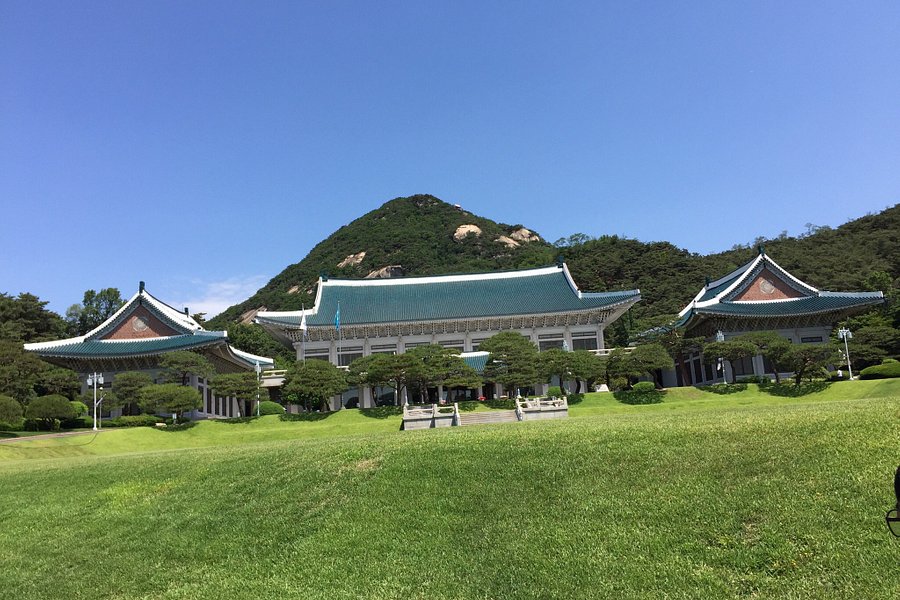
Most Recent: Reviews ordered by most recent publish date in descending order.
Detailed Reviews: Reviews ordered by recency and descriptiveness of user-identified themes such as wait time, length of visit, general tips, and location information.
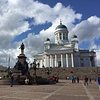
Also popular with travelers
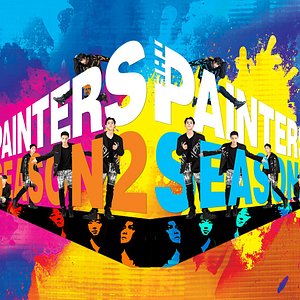
The Blue House, Seoul
- (0.73 mi) Bukchonmaru Hanok Guesthouse
- (1.23 mi) Hostel Tommy
- (0.32 mi) Oh My Guesthouse
- (0.75 mi) Rakkojae Seoul Bukchon Hanok Village
- (1.12 mi) Four Seasons Hotel Seoul
- (0.29 mi) Jihwaja
- (0.20 mi) JukStory Oficia Store
- (0.39 mi) Maple Tree House Samcheongdong
- (0.39 mi) Seoulseo Duljjaero Jalhaneunjip
- (0.29 mi) PKM Garden Cafe
- (0.14 mi) Chilgung
- (0.58 mi) Here Korea Travel
- (0.43 mi) National Folk Museum of Korea
- (0.27 mi) Cheongwadae Sarangchae
- (0.52 mi) Gyeongbokgung Palace
View Cart Checkout
- No products in the cart.
Subtotal: $ 0.0

- Things to do
- Virtual Tour
- One Day Tour
- Multi Day Tour (2~5 Days)
- Multi Day Tour (6~13 Days)
- Customized Tour
- DMC & PCO Service
- Virtual & Hybrid Event
- Clients & Project
- Airport Transportation
- Korea chauffeur service
- Hotel + Airport Transportation
- Accommodations
- Tourist Map
Presidential Blue House
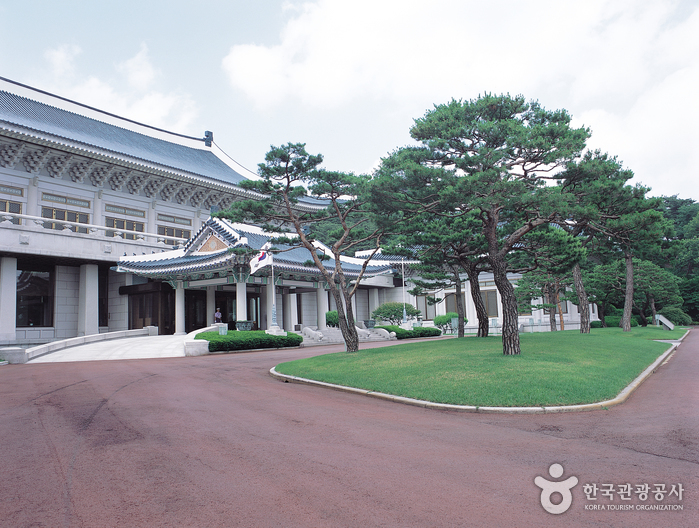
Operating Hours
The signature markings of the Presidential Residence of Cheong Wa Dae are its blue tiles. It is the first thing that catches one’s attention upon entering the premises. The blue tiles and the smooth roof blend beautifully with Bugaksan Mountain in the backdrop.
The unique buildings of Cheong Wa Dae are comprised of the Main Office, Yeongbingwan (Guest House), Chunchugwan (Spring and Autumn Pavilion), Nokjiwon (Green grass), the Mugunghwa (Rose of Sharon) Valley, and the Seven Palaces. It is interesting to see that these buildings all have distinctive shapes. They are unique and beautifully designed, built in the Korean traditional style. The blue tiles and the smooth curve shape of the main office roofs are elegantly built. Approximately 150 thousand tiles compose the roof of the Blue House. Each were baked individually which make them strong enough to be used for hundreds of years. If you turn to the right you will see Chunchugwan. The roof of Chunchugwan was made of earthen tiles. This is where the president’s press conferences are held. On the left side of the main office, there is the Yeongbingwan. It was designed to hold large conferences and official events for foreign guests.
You can walk along Nokjiwon and the Mugunghwa Valley. At Nokjiwon a succession of presidents planted trees on memorial occasions. There is one famous tree which is 310 years old. The Mugunghwa Valley has colorful flowers, a fountain, and a phoenix statue, which makes it perfect for taking pictures. It is best to visit here between July and October when the Mugunghwa flowers bloom.
A walk around the paths just outside the Blue House grounds is a pleasure as the surroundings are peaceful and beautiful. The paths follow Gyeongbokgung Palace to the Blue House and to Samcheong-dong Park. The walk from the East Gate of Gyeongbokgung Palace to the Blue House is the most beautiful part. With the road in the middle, there is the Gyeongbokgung Palace stone wall on the left and galleries and old buildings on the right. The stone wall of Gyeongbokgung Palace is scattered with beautiful old trees that will comfort you. Across the street are Hyundai Gallery, Geumho Gallery and other famous galleries and stylish cafes. Of the many nice cafes and restaurants, there is “The Restaurant.” Its interior is modern and one side of the building is a glass wall where you can enjoy viewing the scenery and the stonewall alley while dining. After you pass this area, and before you reach the Blue House, turn to the right and you will reach Samcheong-dong Park. There are also many famous restaurants and galleries in the area.
Not available
Not permitted
- Pingback: bts: everything everywhere all at once | friends without id
Leave a Reply Cancel reply
Your email address will not be published. Required fields are marked *
Save my name, email, and website in this browser for the next time I comment.
Post comment
Cheong Wa Dae (Blue House)
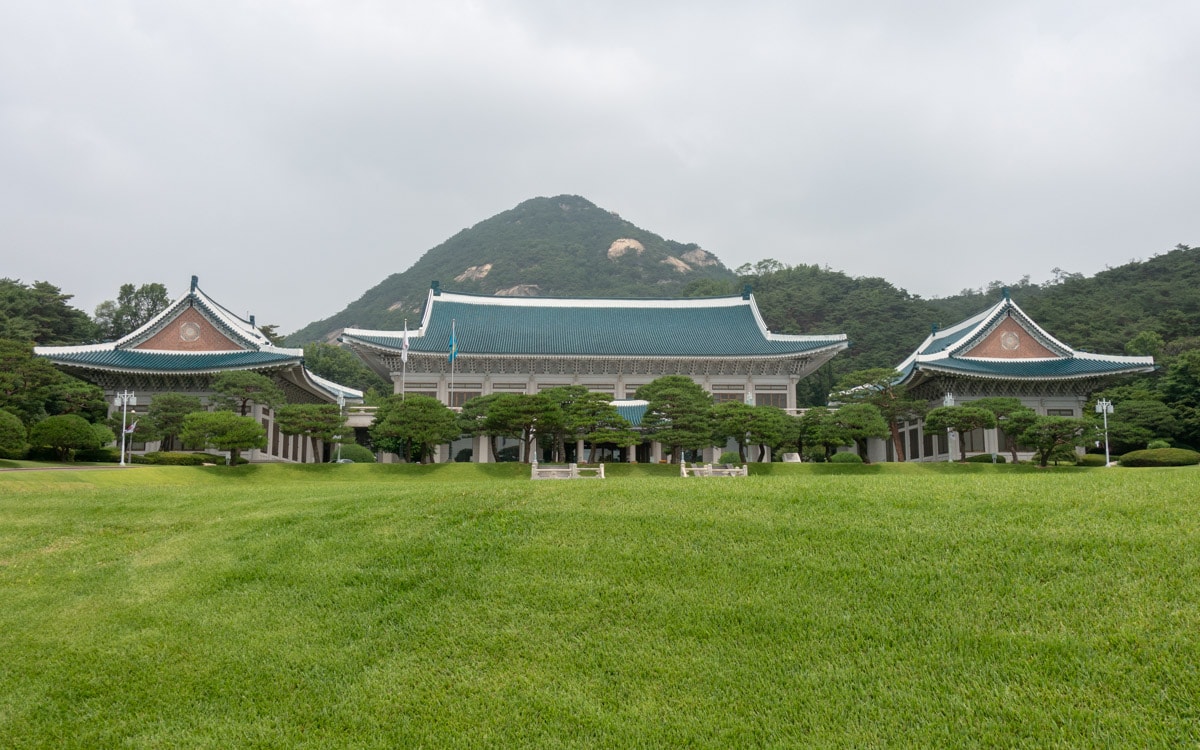
Cheong Wa Dae, or Blue House, is the official residence of the President of the Republic of Korea. It was built with traditional Korean architectural styles. The name comes from the translation of Cheong Wa Dae which means “pavilion of blue tiles.”
In 1104, King Sukjong built a royal villa at this location. When Gyeongbokgung Palace was built in 1395, the villa was used as a rear palace garden.
The area of Cheong Wa Dae was used by Governor-General of Korea as his residence and office during the Japanese occupation of Korea in the first part of the twentieth century. This building was known as Gyeongmudae.
After the occupation, the Republic of Korea was founded. Gyeongmudae was used as the residence and office of the president, who at the time was Syngman Rhee.
On December 30, 1960, President Yun Bo-seon renamed the residence as Cheong Wa Dae, after its beautiful blue tiles. These tiles are now a cultural icon of Korea.
Table of Contents

Tour of Cheong Wa Dae (Blue House)
Reservations are required to take tours.
Learn more about taking a tour Cheong Wa Dae.
Cheong Wa Dae Blue House Hours
Tours are available at 10:00, 11:00, 14:00, and 15:00 from September 17 to June 30. Tours are available at 10:00, 11:00, 15:00, and 16:00 from July 1 to September 16.
There are no tours on Sundays, Mondays, and holidays.
Tours are free
How to get to Cheong Wa Dae Blue House
Take Subway Line 3 to Gyeongbokgung Station (Exit 5).
Additional Resources
Save money while exploring Seoul with Rakuten's cashback program. By booking hotels through Rakuten, visitors can earn cashback rewards and enjoy significant savings. Exclusive partnerships and deals make stays in Seoul more affordable, freeing up funds for attractions, dining, and other experiences. I use Rakuten for cashback on all of my hotel stays in Seoul.
If you sign up using the link below, you will get $30 cashback after your first purchase.
Learn more about Rakuten
Klook is a reliable online platform offering discounted tickets and reservations for attractions and services in Seoul. It covers theme parks, museums, transportation, WiFi, tours, and more. Travelers can save time and money by booking through Klook's user-friendly interface, with secure transactions and helpful customer support.
If you sign up using the link below, you will get $5 off your first order.
Last Updated on Oct 21, 2023

- South Korea

Cheong Wa Dae, Guided Tour to the Blue House
P eople have some particular fascination with the top office of the country. In the UK, it’s Buckingham Palace, in the USA, it’s the White House. In South Korea, it’s quite similar – people go to visit The Blue House (Cheong Wa Dae). It’s interesting to see where the top government meetings take place and get a glimpse of the President’s life.
Cheong Wa Dae means “building with blue (청 – ‘Cheong’) roof tiles (와 – ‘wa’). That’s why in English, the President Complex is The Blue House. It’s located near Gyeongbokgung Palace, at the site of Gyeongmudae (archery range). At this location, civil service examinations, military recruitment, and martial arts competitions took place. In the back of Blue House is Bugaksan Mountain, one of the four mountains surrounding the old city of Seoul. From the garden, in front of the President’s Office, you can enjoy the fantastic views of Namsan and the city of Seoul.
Cheong Wa Dae was the home to the executive office and the residence of the President of South Korea. The complex also accommodates the Presidential Secretariat and Press Center. President Youn Posun (1960-62, 4th presidential term) first used Cheong Wa Dae to describe its office and residence. As of May 10, 2022 the Blue House is open to the public because president Yoon Suk-yeol moved its official office to Yongsan. Now, you can tour the grounds of the Blue House and explore areas what were not open to the public before.
How to Book?
To visit the Blue House, you must make an online reservation on the Blue House website. Online reservation is only possible for Korean citizens and foreign long-term residents in Korea (you must use a Korean phone number to verify your identity.
If you are just a visitor to Korea, there’s still a possibility to tour the Blue House. Online pre-reservation is not available at the moment, but there are 500 spots a day reserved for walk-ins on a first-come first-get basis. You just need to show up at the designated times: 9:00 AM and 1:30 PM. (make sure to come a bit early to secure a spot).
Getting There
The tour starts from the Blue House 3 gates – left, central and right. Make sure to go at least 20 min before the actual start of the tour. You might have to show your reservation, and/or passport/ID for a check-up. Make sure to wear mask at all time during the tour.
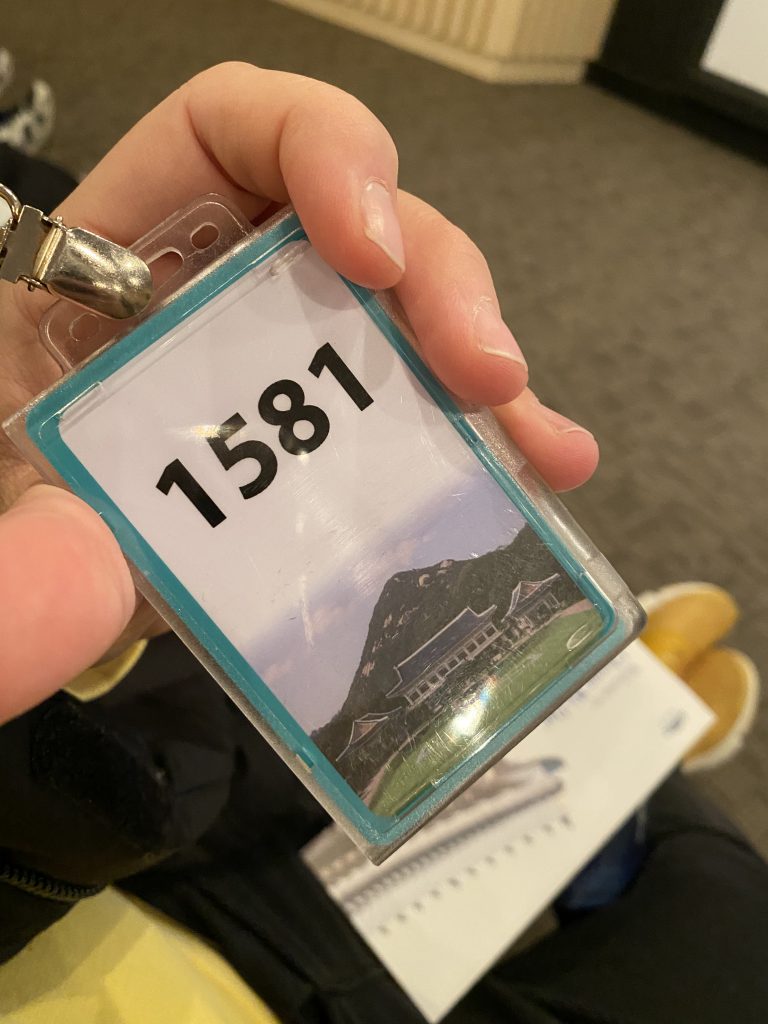
``Cheong Wa Dae Access Badge``

``Present from the President``
The blue house tour.
The tour starts at Chunchugwan – the press center of Blue House. Chunchugwan is where journalists get briefed on government policies. You will go through a security check. Note that currently there’s no guided tours and not much information in English, but I believe this will change in the foreseeable future.
As you might expect, the buildings and surrounding green and service areas are carefully maintained. Expect to see lots of people (up to 10,000 people a day can be let to tour the grounds of the Blue House).
Presidential Residence | 대통령관저
The President’s Residence was never opened to the public, so it’ might be the hilight of the tour. Make sure not to miss it. It’s in the upper part of the Blue House grounds. The residence consists of two hanok style buildings, small garden and beautiful pavilion.

``170 years old umbrella pine tree``

``Nokjiwon Selfie with a friend``
Nokjiwon is a garden with a 170-year-old umbrella pine tree and three Korean red pine trees. The lawn is often used for outdoor events like concerts or press conferences. It connects the president residence with the office buildings of the Blue House. Just a move is the guest house used for designated foreign guests.
Sangchunjae | 상춘재
Sangchunjae is a beautiful hanok house in front of Nokjiwon. The building accommodates state guests and important visitors of Cheong Wa De. Sangchunjae means “eternal spring.”
Sugungteo is the site of the former Blue House representative building. Built in 1939 during the Japanese Occupation, it was the residence of the Governor-General. For 54 years, until 1993, this was where presidents met foreign officials and held government meetings. One witness, which survived the Joseon Era, the Japanese Occupation and the turbulent recent Korean history stands nearby, a 700-year-old spreading yew tree.

``700-years-old yew tree``
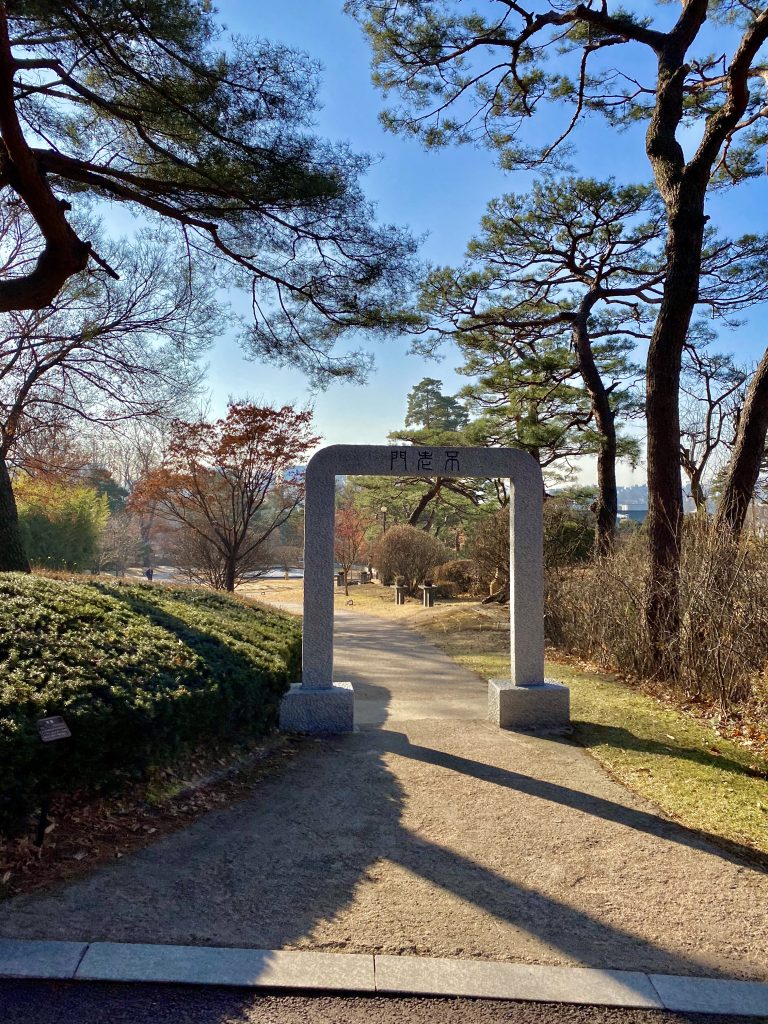
``Garden at The Blue House``
The next stop is the highlight of the Blue House Tour. You will pass a second security check. If you look to the left after the security gate, you will see the beautiful Segongwon Garden with a replica of the famous Bullomun Gate of Changdeokgung Palace. I can imagine the garden can be one of the favorite places of the President and the First Lady for a talk and walk with dignified guests.
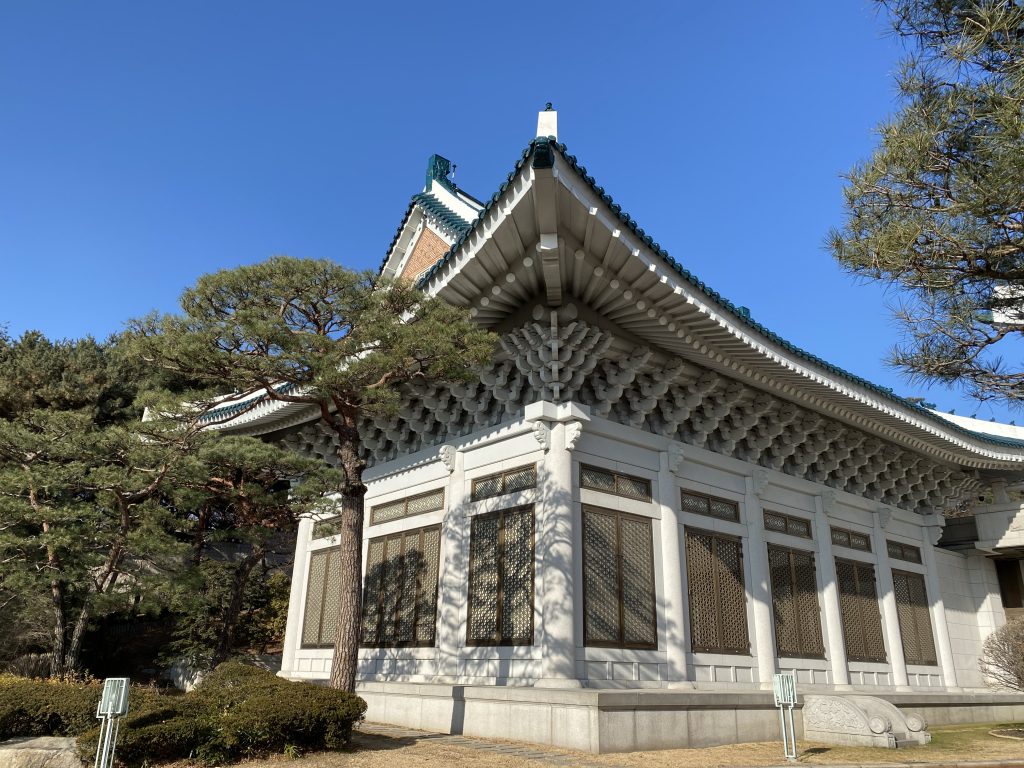
``Blue House uses Dancheong building painting technique``

``View towards Namsan Tower and Central Seoul``
Main blue house building.
Main Blue House building reflects the traditional Hanok style architecture. In the back of the building are the footsteps of Bugaksan Mountain. The most striking part of Cheong Wa Dae is the roof structure. It’s painted in a discrete Danchong coloring style. The three sections of the President’s office are covered with over 150,000 blue roof tiles.
Inside the premises of the main Blue House building is currently available and offers an amazing opportunity to see the staterooms, recently only available to a selected few. So many important meetings have happened there, major historical decisions for the country of South Korea.
Yeongbingwan | 영빈관
State Guest House is the venue for welcome banquets, state meetings, and various performances. The exterior of the building is classical, with impressive granite columns. You can only get a glimpse of the interior through the big glass windows of the grand foyer of the building.
Even though there’s no end time for the tour, new people will be let now and then. After finishing the tour, you might want to visit also Cheongwadae Sarangchae (청와대사랑채) – a museum dedicated to the history of the Korean president institution.
Useful Tips
- Even though there are no dress code requirements, ensure to be adequately dressed for what Cheong Wa Dae represents.
- Taking photos at Cheong Wa Dae is permitted, but respect other people’s privacy.
- Tour is around 60-70 min, so plan accordingly. You might stay longer if you wish as there’s no organized tour at the moment
- Food and drinks are not allowed at the Blue House and will not be provided inside.
- Toilets are only available at the beginning of the tour at the security check.
Everyday except Tuesdays – 9:00, 10:30, 12:00, 13:30, 15:00, 16:30
Share some love
Love the blue house guided tour post share it on pinterest.
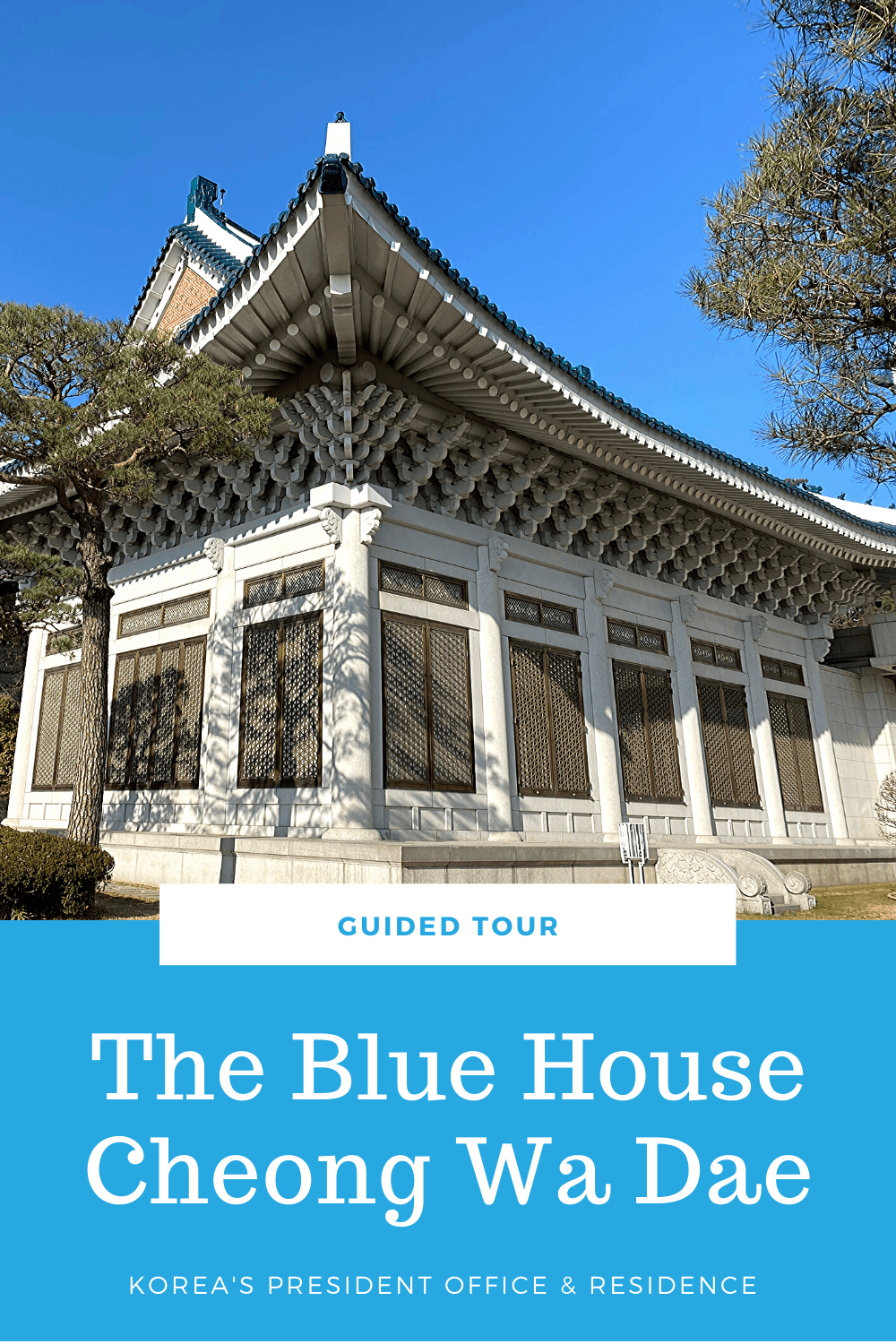
previous post

Jessica Kokoszki
Super interesting. I wish you could’ve gone inside. Geez…if those walls could speak. The grounds look beautiful also.
Inside is for special guests of the President 😉 Who knows, maybe we will get invited sooner or later 🙂
Nicolas Sandoval
I have a question. Do you know for what are used the 2 buildings at the sides the main office?
Beautiful place! I wonder how would it be during spring when colours are more vivid 🙂
I wish I did visit in Spring. Actually that’s not a bad idea, I should probably revisit and update the photos 😉
post a comment cancel reply
Save my name, email, and website in this browser for the next time I comment.
실시간 주요 뉴스 PUSH 알림서비스를 구독할 수 있습니다.

korea joongAng daily
Home > culture > features.

One year on, tourists continue to flock to Blue House and surrounding neighborhoods
![blue house tour seoul A bird's-eye view of the Blue House in central Seoul on May 15, 2022, shortly after it opened to the public as soon as President Yoon Suk Yeol took office. [YONHAP]](https://koreajoongangdaily.joins.com/data/photo/2023/05/09/f34471a7-6657-440c-956c-fd86e0b44ab8.jpg)
A bird's-eye view of the Blue House in central Seoul on May 15, 2022, shortly after it opened to the public as soon as President Yoon Suk Yeol took office. [YONHAP]
![blue house tour seoul A visitor from overseas takes a picture of the first lady portraits inside the Main Office Building of the Blue House. [MINISTRY OF CULTURE, SPORTS AND TOURISM]](https://koreajoongangdaily.joins.com/data/photo/2023/05/09/fc817bfd-c27c-4f38-bad4-76b788505d65.jpg)
A visitor from overseas takes a picture of the first lady portraits inside the Main Office Building of the Blue House. [MINISTRY OF CULTURE, SPORTS AND TOURISM]
![blue house tour seoul Visitors are allowed free access to Gyeongbok Palace in central at night when wearing hanbok, or traditional Korean dress. [LEE JIAN]](https://koreajoongangdaily.joins.com/data/photo/2023/05/09/b64b292a-47c7-4146-b532-563f7be6cbc5.jpg)
Visitors are allowed free access to Gyeongbok Palace in central at night when wearing hanbok, or traditional Korean dress. [LEE JIAN]
![blue house tour seoul The Ministry of Culture, Sports and Tourism announced plans on April 19 to turn the Blue House into a "multi-purpose cultural complex" as well as a global tourist landmark. [MINISTRY OF CULTURE, SPORTS AND TOURISM]](https://koreajoongangdaily.joins.com/data/photo/2023/05/09/27c250b7-00c6-40e0-9de7-eea4954ac560.jpg)
The Ministry of Culture, Sports and Tourism announced plans on April 19 to turn the Blue House into a "multi-purpose cultural complex" as well as a global tourist landmark. [MINISTRY OF CULTURE, SPORTS AND TOURISM]
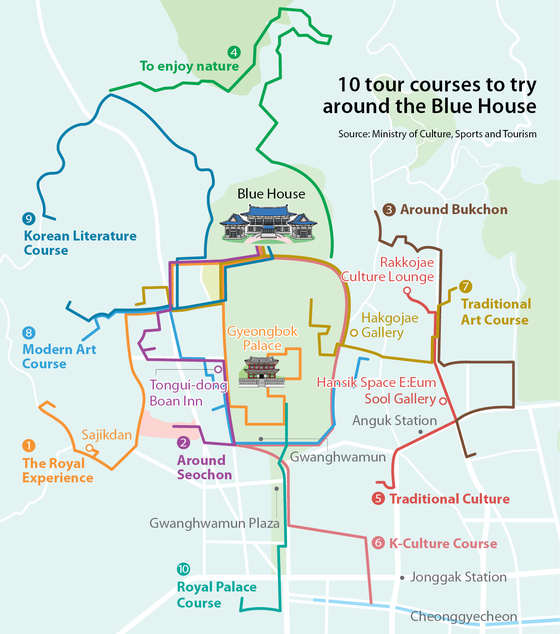
The largest and most-visited palace is Gyeongbok Palace in Jongno District, central Seoul. It was built in 1395 in the heart of Seoul as the main royal palace during the Joseon Dynasty (1392-1910). [LEE JIAN]
![blue house tour seoul Rakkojae at Bukchon Hanok Village in Jongni District, central Seoul, is a 140-year-old traditional Korean house that has been refashioned into an upscale hotel.[JOONGANG ILBO]](https://koreajoongangdaily.joins.com/data/photo/2023/05/09/85ebff9e-3301-4e45-84a3-74124ca9683c.jpg)
Rakkojae at Bukchon Hanok Village in Jongni District, central Seoul, is a 140-year-old traditional Korean house that has been refashioned into an upscale hotel.[JOONGANG ILBO]
![blue house tour seoul Different traditional Korean liquorS are displayed at the Sool Gallery in Jongno District, central Seoul. [JOONGANG ILBO]](https://koreajoongangdaily.joins.com/data/photo/2023/05/09/04c3c41e-122f-48ae-88c2-b626fbf95709.jpg)
Different traditional Korean liquorS are displayed at the Sool Gallery in Jongno District, central Seoul. [JOONGANG ILBO]
![blue house tour seoul Visitors to Hansik Space E:Eum make kimchi in Jongno District, central Seoul [JOONGANG ILBO]](https://koreajoongangdaily.joins.com/data/photo/2023/05/09/35fa2d94-e50b-42dd-bcba-41e6dcec7ff7.jpg)
Visitors to Hansik Space E:Eum make kimchi in Jongno District, central Seoul [JOONGANG ILBO]
![blue house tour seoul Scallops at PKM Garden & Restaurant in Jongno District, central Seoul [LEE JIAN]](https://koreajoongangdaily.joins.com/data/photo/2023/05/09/171301ca-cd20-4111-a01e-3d2d66982248.jpg)
Scallops at PKM Garden & Restaurant in Jongno District, central Seoul [LEE JIAN]
![blue house tour seoul Tongui-dong Boan Inn is an 18th-century motel-turned-gallery in Jongno District, central Seoul [JOONGANG ILBO]](https://koreajoongangdaily.joins.com/data/photo/2023/05/09/aa65b688-f7cf-4574-9094-0dd52a9b5399.jpg)
Tongui-dong Boan Inn is an 18th-century motel-turned-gallery in Jongno District, central Seoul [JOONGANG ILBO]
![blue house tour seoul Yeopjeon or brass coins are used to buy food at Tongin Traditional Market in Jongno District, central Seoul [JOONGANG ILBO]](https://koreajoongangdaily.joins.com/data/photo/2023/05/09/f9633500-b33b-437c-a0af-fcb06ddd1bc2.jpg)
Yeopjeon or brass coins are used to buy food at Tongin Traditional Market in Jongno District, central Seoul [JOONGANG ILBO]
![blue house tour seoul Yeonpotang, a clear hotpot with nakji (small octapus) and various vegetables at Shinanchon in Jongno District, central Seoul [LEE JIAN]](https://koreajoongangdaily.joins.com/data/photo/2023/05/09/a6839c57-210a-44a1-9f3c-cb16ce13e736.jpg)
Yeonpotang, a clear hotpot with nakji (small octapus) and various vegetables at Shinanchon in Jongno District, central Seoul [LEE JIAN]
![blue house tour seoul A cook at Tosokchon Samgyetang in Jongno District, central Seoul, makes Korean chicken ginseng soup known as samgyetang. [JOONGANG ILBO]](https://koreajoongangdaily.joins.com/data/photo/2023/05/09/7c95c211-70cc-4b43-a3ac-3005198120eb.jpg)
A cook at Tosokchon Samgyetang in Jongno District, central Seoul, makes Korean chicken ginseng soup known as samgyetang. [JOONGANG ILBO]
![blue house tour seoul Sejong Village Food Street in Jongno District, central Seoul [JOONGANG ILBO]](https://koreajoongangdaily.joins.com/data/photo/2023/05/09/48068e1a-d2bf-4691-971c-efd62b65166c.jpg)
Sejong Village Food Street in Jongno District, central Seoul [JOONGANG ILBO]

More in Features
No colors or hand gestures during elections: 5 no-nos for Korean idols and celebrities
Braving the China Sea in a thrifted yacht and motley crew, all in the name of sustainability
[WHY] Are Taylor Swift and Korea ever ever ever getting back together?
Winning the K-pop game: BTS isn't the magic loot box
Dropping the K: Can K-pop ever be just pop?
Related Stories
Blue House to be opened to public on May 10
Nearly 1.4 million visited Blue House since public opening: data
People storm Blue House, but in a celebratory way
Blue House visitor numbers rise with the temperature
Walking sticks and cameras in hand, visitors tour Korea's newly open Blue House
You might also like

To write comments, please log in to one of the accounts.
Standards Board Policy (0/250자)

Firebird Travel
RUSSIA TRAVEL HOME
Thank you for your enquiry.
RUSSIA TRAVEL PACKAGES A selection of Russian tours to take as they are or adjust to your needs.
THE GOLDEN RING Visit the heart of ancient Russia. What is the Golden Ring?
MOSCOW TOURS What you can see in Moscow.
MOSCOW DAY TRIPS Get out of Moscow and take a relaxing trip to some of these places
ST. PETERSBURG Some of the sights to see in Petersburg
LAKE BAIKAL TOURS Hiking and trekking around the world's deepest lake in the heart of Siberia
RUSSIAN DIGS Come and work in the field on a Russian Archaeological dig. Full training given on site.
TRAVEL TIPS & SERVICES Getting around in Russia
If you do not receive a confirmation email shortly then you have probably incorrectly entered your email.
Number of travelers ">
Special Interests or requests. "> ">
If you experience difficulties please use this link to send Regular Email . All information is treated as confidential
- Car Rentals
- Airport Transfers
- Attractions & Tours
- Bundle & Save
- Destinations
- Trip.com Rewards
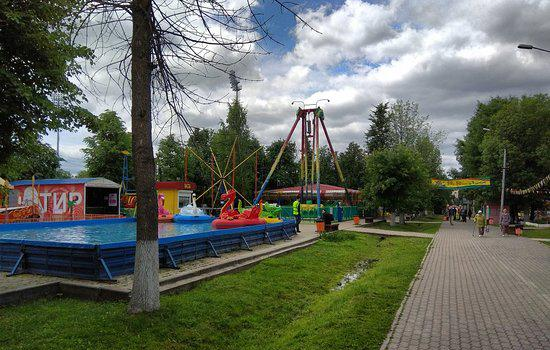
Elektrostal'

Elektrostal' Travel Guide
Experience elektrostal'.
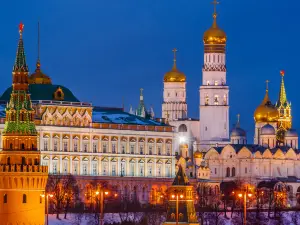
The Moscow Kremlin

Krasnaya ploshchad'

State Historical Museum
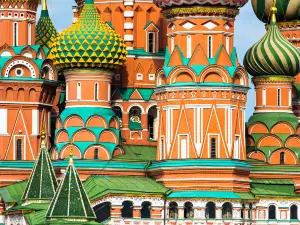
St. Basil's Cathedral
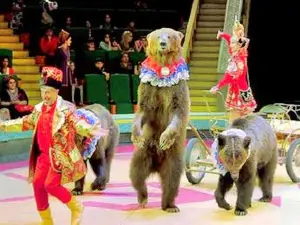
Great Moscow State Circus
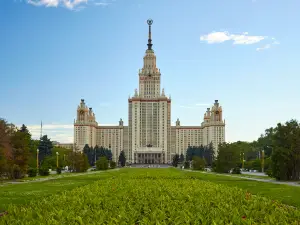
Moscow State University
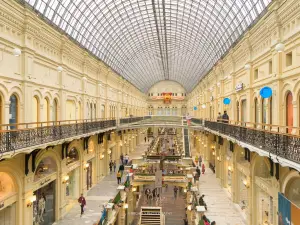
Moscow Metro

Bolshoi Theatre
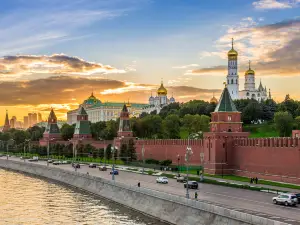
Cafe Vostochny Express
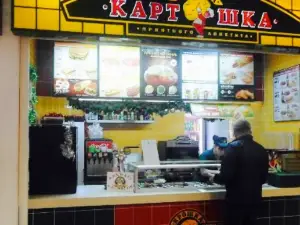
Kroshka Kartoshka

Coffee Shop Usy Teodora Glagoleva

Fabrika Obedov

Beer Club Tolsty Medved

Cafe Antresole

Quest-Cafe 4 Komnaty

Prima Bolshogo
Other recommended cities.
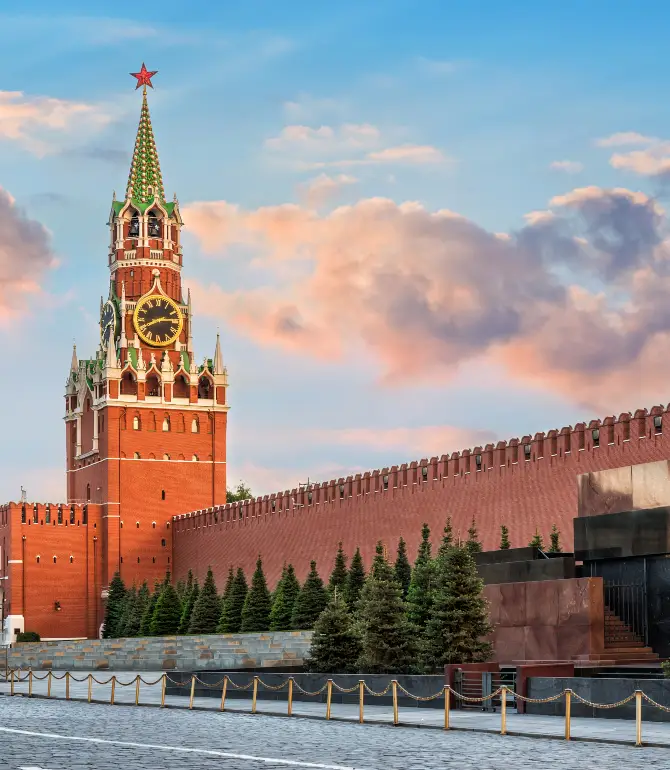
Popular Types of Attractions in Elektrostal'
Popular attractions in elektrostal', popular restaurants in elektrostal', popular destinations, recommended attractions at popular destinations, more things to do in elektrostal'.
- Customer Support
- Service Guarantee
- More Service Info
- Website Feedback
- About Trip.com
- Terms & Conditions
- Privacy Statement
- About Trip.com Group
Other Services
- Investor Relations
- Affiliate Program
- List My Property
- Become a Supplier
- EUR (€)
- GBP (£)
- Contact us

- Currency :
- US Dollar Euro Pound Sterling Russian Ruble Australian Dollar Canadian Dollar Swiss Franc Danish Krone Japanese Yen Norwegian Krone Swedish Krona
- Toll Free 0800 011 2023
- US and Canada United Kingdom Australia Brazil Netherlands Russia Sweden
- Tours by Region Moscow Saint Petersburg Golden Ring Lake Baikal Murmansk Siberia & Far East Sochi & Southern Russia Amsterdam Berlin Copenhagen Gdansk Georgia Helsinki Kaliningrad Kamchatka Karelia Kazan Klaipeda Nizhny Novgorod Northern Europe Oslo Perm Riga Ryazan Stockholm Tallinn Ulan-Ude Veliky Novgorod Vilnius Vladivostok Volgograd Yakutia Yekaterinburg
- Why Choose our Day Tours
- One Day Tours Two Days Tours Three Day Tours
- About Russian tours Private vs Group Tours
- Tours by Region Moscow & St.Peterburg Moscow Saint Petersburg Golden Ring Lake Baikal Trans-Siberian Siberia & Far East Altai Kaliningrad Kamchatka Karelia Kazan Perm Veliky Novgorod Yakutia Yekaterinburg
- Tour Types Small Group Tours Private Tour Theme Tour
- Moscow events St. Petersburg events Events archive
- Events by type Ballet Opera Concert Show All types
- Top theaters Bolshoi theatre - Historic Stage Bolshoi theatre - Small Stage Mariinsky Theater Mariinsky Theatre - Mariinsky II Mikhailovsky Theater
- Direction Moscow - St.Petersburg St. Petersburg - Moscow
- Ships MS Rostropovich MS Volga Dream MS Anton Chekhov MS General Lavrinenkov MS Georgy Chicherin MS Ivan Bunin MS Konstantin Fedin MS Konstantin Korotkov MS Kronshtadt MS Maxim Gorky MS Nikolay Chernyshevsky MS Nizhny Novgorod MS Rachmaninoff MS River Victoria MS Scenic Tsar MS Tikhy Don (MS Alexander Borodin) MS Vasiliy Kandinsky MS Zosima Shashkov Mustai Karim
- Russian Visa Invitation
- Moscow The Kremlin Red Square Golden Ring Tverskaya Street Grand Kremlin Palace (The Kremlin) Christ the Savior Novodevichiy Convent Moscow Subway The Bolshoi Theater Armoury Chamber (The Kremlin) St. Basil's Cathedral The Pushkin Museum of Fine Arts Yury Gagarin Cosmonauts training center
- Saint Petersburg Hermitage Museum Peterhof Catherine's Palace (Tsarskoe Selo) Pavlovsk St. Isaac Cathedral Peter and Paul Fortress Nevsky Prospect Yusupov Palace Savior on Blood Amber room Bronze Horseman (Senate square) Hermitage Theatre Kazansky Cathedral Kronstadt Palace Square Spit of the Vasilievsky Island
- 1/7th of the World Volga River Siberia Baikal Kazan Sochi Smolensk Nizhny Novgorod Kaliningrad Ulyanovsk Verkhoturova Island
- uVisitRussia Why travel with UVisitRussia Customers' Testimonials Contact details Cancellations & Changes
- Russian Travel News
- Russian travel advice Advices while packing Advices while travelling
Tour of famous Moscow Metro. Explore the Underground World! (2 hours)
- Add to wishlist
On this tour you take in some of Moscow's most important and highly decorated stations. Carrying up to 7 million passengers a day and covering almost the entire city, the Moscow Metro is one of the most extensive mass transit systems in the world. It's famous for the fine examples of social-realism which decorate many of its stations.
Visit some of the most important stations and get the chance to admire spectacular baroque-style ceilings, marble statues, busts of Communist heroes, stained glass windows, and ceiling mosaics depicting the bright Soviet future. Visit the most remarkable stations like Komsomolskaya, Kurskaya, Kievskaya and others, with the experienced guide who will bring you a full insight into their fascinating history.
- Tour of Moscow's Metro system visiting beautifully decorated key stations on the network.
- System that carries more than 7 million passengers per day
- Views of the most opulently designed tunnels & platforms
- Significance to the country—known as the “People's Palace”
- History & stories relayed by an expert local guide
If you wonder why the Moscow metro is considered one the most beautiful in the world, this tour is made for you!
Important info
Ask a travel expert.
- Professional English-speaking guide assistance. Other languages upon request (additional charge may apply)
- Hotel pick-up and drop-off
- Personal expenses
- Gratuities (optional)
- Food and drinks
- Confirmation will be received at time of booking
- Children must be accompanied by an adult
Departure and return point: nearest metro station to your central Moscow hotel
Departure time: flexible
Sights included in program
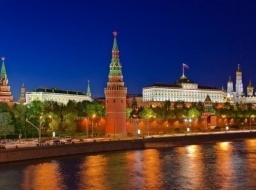
Thanks ! We will reply you in less than 24 hours (usually within 1-2 hours) .
Our flexible payment options allow you to pay 20% of a deposit first and the remaining 80% in 14 days prior to your tour date - payment can be done both online or over the phone. This gives you the peace of mind knowing your spaces are booked on the tours and that you do not miss out on making the most of your time in Russia.
Also you get the best, top-rated and most experienced and knowledgeable hand-picked tour guide appointed on a priority basis. In our experience, exceptional travel experiences are almost always delivered by exceptional people. With that in mind, we utilize a comprehensive approach to select and employ the best tour guides only. Multilingual and well travelled, each possesses deep insight into the diverse attractions and cultural patterns throughout the region. With us guides undergo a rigorous selection process, achieving outstanding knowledge of local culture and language. Rest assured that the best tour guides only will be working on the tours to give you excellent opportunity to explore the best of the sights during both short and long-term stay in Russia.
Once you complete your reservation, we will send you a booking confirmation email. As the day of the tour approaches, our logistics team will provide you with all relevant information for your tour.
Speak to an expert Call us now
+1 (888) 845-8877
- Shore excursions
- The Best of Two Capitals Private
- The Best of Two Capitals Small Group
- The Best of Two Capitals Gold
- Russia's Ancient Kingdoms
- Cradle of Russia
- Explore Moscow
- Explore St. Petersburg
- Read Customer Testimonials
- Advantages of Traveling with Us
US office 3422 Old Capitol Trail Suite 1252 , Wilmington DE, 19808 USA. US toll-free: 1-888-845-8877 Russian office Ligovsky pr. 57, Office 19, 191040, St. Petersburg, Russia
tel: +7-812-309-5339
© 2001 – 2024 by Northern Crown, Ltd. uVisitRussia and uVisitRussia.com are registered trademarks . Terms & Conditions Privacy Policy
Sign in with your social account

Sign in to our website using your Facebook or Google+ account.
Why Do You Need Our Travel Expert
Contact our experts, and they will help you to plan your best trip to Russia, with attention to every detail!
Our Experts have been in the travel industry for many years, guarantee to offer first class customer service, excellent value for money and unbiased advice. They are standing by to find and build your dream holiday to one of the world's most fascinating destinations - Russia. Your personal Travel Expert will guide you through each stage of the travel process, from choosing a program that fits you best to support during your trip.
Just tell us your e-mail, and we'll take care of everything!
Leave your phone number
Your tour request has been received. Thank you ! We have sent you the confirmation message to [email]
Please make sure that you receive this message (sometimes e-mail messages may go to the spam/junk mail). If you did not get this message, it means you will not get message with the tours' selection as well. If you use a Yahoo!, Gmail, AOL or Hotmail, we recommend to add [email protected] to your address book.
We recommend to leave your phone number. If we will not heard back that you received the e-mail with the tours' selection, we will contact you by phone. And you will not miss the best tour for you.
Thank you ! Your request for Travel Expert assistance has been sent. We will e-mail you within 1 hour.
Sorry, some changes needed
There was a problem with your request.
Mobile Menu Overlay
The White House 1600 Pennsylvania Ave NW Washington, DC 20500
FACT SHEET: Japan Official Visit with State Dinner to the United States
Today, President Biden welcomed Prime Minister Kishida of Japan for an Official Visit with State Dinner to celebrate the deep and historic ties between our two countries. This visit also reflects the upward trajectory of the U.S.-Japan Alliance as it evolves into a global partnership that promotes a shared vision of progress and prosperity for the future. The two leaders’ ambitious efforts span the depth and breadth of the Alliance to include cooperation on defense and security; space; advanced technology and economic cooperation; diplomacy and development; and people-to-people ties.
This bilaterally coordinated fact sheet provides an overview of political understandings that were affirmed or reaffirmed during the Official Visit with State Dinner, as well as plans for further cooperative activities between the United States and Japan.
DEFENSE AND SECURITY COOPERATION
Our defense and security ties form the core of our Alliance and are the cornerstone of regional peace and security. Recognizing that the Alliance has reached new heights, we plan to further bolster our defense and security cooperation to allow for greater coordination and integration.
Upgrading Alliance Command and Control: The United States and Japan intend to bilaterally upgrade our respective command and control frameworks to enable seamless integration of operations and capabilities and allow for greater interoperability and planning between U.S. and Japanese forces in peacetime and during contingencies. More effective U.S.-Japan Alliance command and control provides strengthened deterrence and promotes a free and open Indo-Pacific in the face of pressing regional security challenges. In order to support this initiative, they reaffirm to deepen Intelligence, Surveillance, and Reconnaissance (ISR) cooperation and Alliance information sharing capabilities, including through the Bilateral Information Analysis Cell.
Exploring Advanced Capabilities Cooperation under AUKUS Pillar II: Recognizing Japan’s strengths and the close bilateral defense partnerships with the AUKUS countries, AUKUS partners – Australia, the United Kingdom, and the United States – are considering cooperation with Japan on AUKUS Pillar II advanced capability projects.
Bolstering Regional Networked Security: As our two countries deepen cooperation and coordination within the Alliance, we also look to expand our efforts to enhance regional security. The United States and Japan intend to work together toward our vision to cooperate on a networked air defense architecture, incorporating future capabilities with Australia. We will explore enhanced cooperation, including missile defense information sharing to counter growing air and missile threats. As our two countries look to ensure a secure and peaceful region, the United States and Japan plan to conduct deterrence operations to address escalatory or provocative activities around Japan.
Deepening U.S.-Japan Defense Industry Cooperation : The United States and Japan plan to leverage our respective industrial bases to establish an Alliance defense production capacity to meet the demand for critical capabilities over the long term. We will convene a Forum on Defense Industrial Cooperation, Acquisition and Sustainment (DICAS) co-led by the U.S. Department of Defense and Japan Ministry of Defense to identify priority areas for partnering U.S. and Japanese industry, including on co-development, co-production and co-sustainment. As a part of this mutually beneficial effort, we announce our intention to explore co-production of advanced and interoperable missiles for air defense and other purposes to further bolster the Alliance deterrence posture. Our two countries also commit to establishing a working group to explore opportunities for future fighter pilot training and readiness, including AI and advanced simulators, and co-development and co-production of cutting-edge technologies such as common jet trainers to maintain combat-ready next-generation fighter airpower.
Leveraging Regional Maintenance and Repair Capabilities: The U.S. Department of Defense plans to work with U.S. Congress to authorize the U.S. Navy to use private shipyards to conduct maintenance and repairs of 90 days or less on U.S. Navy ships deployed to the Indo-Pacific from homeports in the United States, including Guam. Additionally, the U.S. Navy continues to review opportunities to conduct maintenance and repair of forward-deployed U.S. Navy ships at Japanese commercial shipyards. The United States and Japan plan to explore the possibility of conducting maintenance and repair on engines of Japan-based U.S. Air Force aircrafts including fourth generation fighters. Supporting the new DICAS’s oversight of co-sustainment, the two countries will convene the first Working Group for Ship Repair in Japan by June 2024 to coordinate future maintenance and repair opportunities
Enabling Japan’s Stand-off Defense and Counter-hypersonic Capabilities: The United States continues to support Japan’s capability development, highlighting the signing of the Letter of Offer and Acceptance for Japan to acquire U.S. Tomahawk Land Attack Missiles and the start of a training pipeline and ship modifications for Japan to acquire operational capability. The United States and Japan plan to also continue to pursue cooperative development of a Glide Phase Interceptor program to counter hypersonic threats, which aims to strengthen regional deterrence and build on long-standing missile defense cooperation between the two countries.
Advancing Trilateral Cooperation : The United States and Japan with Australia intend to seek to advance trilateral intelligence reconnaissance, and surveillance (ISR) operational coordination, including by identifying key capabilities to integrate into exercises and training. Building on the announcement at the Australia Official Visit in October 2023 to pursue trilateral cooperation with Japan on unmanned aerial systems (UAS), our three countries are pursuing cooperative opportunities in the rapidly emerging field of collaborative combat aircraft and autonomy. Continuing the momentum from the Camp David trilateral summit, we welcome progress on establishing an annual multidomain exercise between the United States, Japan, and the Republic of Korea (ROK). Recognizing the commitments made in the Atlantic Declaration and the Hiroshima Accord, and as the Indo-Pacific and Euro-Atlantic regions become ever more interlinked, both countries welcome the announcement of regular U.S.-Japan-UK trilateral exercises, beginning in 2025, as they enhance their shared and enduring security.
Deepening Cooperation on Information and Cyber Security: The two countries pledge to continue to deepen their cooperation on information and cyber security to ensure the Alliance stays ahead of growing threats and builds resilience in the information and communication technology (ICT) domain. They plan to also enhance their cooperation on the protection of critical infrastructure. The United States and Japan plan to establish a working group of relevant experts to develop an action plan on achieving mutual recognition on cybersecurity labelling schemes for Internet of Things.
Boosting our Humanitarian Response Capacity : Recognizing the importance of rapidly responding to frequent and severe climate change-related and other natural disasters, we plan to explore cooperation on the establishment of a humanitarian assistance and disaster relief hub in Japan.
Deepening U.S.-Japan Defense Science and Technology Cooperation: The United States and Japan continue to evolve bilateral science and technology cooperation through the Defense Science and Technology (S&T) Cooperation Group (DSTCG). Co-chaired by the Under Secretary of Defense for Research and Engineering (USD(R&E)) and the Commissioner for the Acquisition, Technology and Logistics Agency (ATLA), the DSTCG aims to better integrate and align U.S. and Japan defense S&T ecosystems.
Mitigating Impacts on Local Communities: In order to maintain deterrence and mitigate impact on local communities, we are firmly committed to the steady implementation of the realignment of U.S. forces in Japan in accordance with Okinawa Consolidation Plan, including the construction of the Futenma Replacement Facility at Henoko as the only solution that avoids the continued use of Marine Corps Air Station Futenma.
Cooperation on Environmental Issues: The United States and Japan affirm the importance of continued bilateral coordination on stable stationing of USFJ, including on environmental cooperation.
SPACE COOPERATION
As we further strengthen the foundation of our alliance, we also are looking to the future. Our two countries will continue to pioneer and lead on space exploration to include on the Moon.
Signing of Historic Lunar Surface Exploration Implementing Arrangement: The United States and Japan signed a historic implementing arrangement for human spaceflight cooperation on the Moon. Japan will provide and maintain a pressurized rover to support astronauts living and working on the Moon, while the United States will allocate two astronaut flight opportunities to the lunar surface for Japan on future Artemis missions . The shared goal is fora Japanese national to be the first non-American astronaut to land on the Moon on a future Artemis mission. This pressurized rover is intended to enable astronauts to travel farther and work for longer periods on the lunar surface.
Negotiating a Space Technology Safeguards Agreement: The United States and Japan commenced negotiations on a space technology safeguards agreement which is designed to provide the legal and technical framework for U.S. commercial space launch from Japan. The space technology safeguards agreement has the potential to open new commercial opportunities in a range of advanced technologies related to space.
Expanding Space Science Cooperation : Building on the 2023 U.S.-Japan Framework Agreement, Japan will participate in NASA missions, including Dragonfly and the Nancy Grace Roman Space Telescope. Dragonfly is NASA’s robotic mission to Saturn’s moon Titan to investigate its habitability and prebiotic chemistry wherein Japan will provide a seismometer to Dragonfly’s suite of scientific instruments. The Roman Space Telescope is NASA’s flagship next generation observatory; Japan will contribute hardware to support the Coronagraph instrument as well as ground station support. The United States and Japan plan to also collaborate on JAXA’s Next-generation Solar-observing Satellite, SOLAR-C, which is intended to investigate the mysteries of solar atmospheres by conducting spectroscopic observations of UV radiations from the Sun.
Deepening Low-Earth Orbit (LEO) Constellation Cooperation: The United States and Japan announced their intention to collaborate on a future Low-Earth Orbit (LEO) Hypersonic Glide Vehicle (HGV) detection and tracking constellation. This includes cooperation on demonstration, bilateral analysis, information sharing, and potential collaboration with the U.S. industrial base. The integration between U.S. and Japanese constellations of LEO satellites provides an opportunity to improve communications and increase the resilience of both nations’ space capabilities.
Enhancing Satellite Cooperation : The United States and Japan announced the completion of three new operational ground stations for Japan’s Quasi-Zenith Satellite System (QZSS) in Alaska, California, and Guam. The new ground stations will enhance Japan’s ability to monitor and maintain the accuracy of QZSS. Furthermore, Japan will launch two QZSS satellites hosting payloads from the Department of Defense by March 2026.
ECONOMIC, TECHNOLOGY, AND CLIMATE COOPERATION
Technology innovation will drive the alliance in the 21 st century. Our two countries pledge to continue to work closely together on critical and emerging technologies such as AI, quantum, semiconductors, and clean energy. Our enhanced collaboration and investment in these technologies provide opportunities for greater ties and prosperity for both of our countries as we seek to secure our economic and technological futures.
Economic Cooperation
Major Commercial Deals: The private sector in both of our countries recognize the incredible opportunities and promise of growing our commercial ties, especially in areas such as critical and emerging technologies. We welcome the establishment of a Japan Innovation Campus supporting Japanese startups in Silicon Valley and the “Global Startup Campus” in Tokyo, and support accelerating investment in our two countries to foster innovation. We also welcome the following major new and recent commercial deals, among the many, that demonstrate our strong and vibrant economic ties:
Private Sector Investment
- Microsoft has announced it will invest $2.9 billion over the next two years in Japan in artificial intelligence (AI) and cloud computing and data centers, an expanded digital skilling program to train more than three million people, the founding of a Microsoft Research lab in Japan, and cybersecurity cooperation with the Government of Japan to enhance Japan’s cybersecurity resilience.
- Google plans to invest $1 billion in digital connectivity for North Pacific Connect, which expands the Pacific Connect Initiative, with NEC, to improve digital communications infrastructure between the United States, Japan, and Pacific Island Nations.
- Daiichi Sankyo intends to invest $350 million in constructing a new manufacturing building, laboratory and warehouse at its facility in New Albany, Ohio. Daiichi Sankyo estimates the creation of 900 jobs across the United States over three years.
- Amazon Web Services (AWS) has announced it will invest approximately $15 billion in Japan by 2027 to expand existing cloud infrastructure to serve as the backbone for AI and other digital services in the country. AWS estimates this planned investment could contribute up to $37 billion to Japan’s GDP and support an estimated average of more than 30,500 full-time equivalent jobs in local Japanese businesses each year.
- Toyota has announced an additional investment of nearly $8 billion that it expects will add an estimated 3,000 more jobs to increase capacity to support battery electric vehicles and plug-in hybrid vehicles battery production in Greensboro, North Carolina. This is Toyota’s first automotive battery plant in North America, and the plant’s total investment is now nearly $13.9 billion; Toyota expects it will create an estimated 5,100 jobs.
- Honda Aircraft Company has announced an additional investment of $55.7 million for production of its new HondaJet 2600 model in North Carolina. It brings the total investment in the HondaJet business in North Carolina to $573.4 million.
- UBE Corporation has invested $500 million in its Waggaman, Louisiana, a Justice40 community, electrolyte solvent facility project for batteries which it expects to create 60 new jobs.
- Yaskawa Electric Corporation is investing approximately $200 million in new manufacturing facilities for robotics and semiconductor motion solutions in the states of Wisconsin and Ohio which is expected to employ about 1,750 workers and increase the Yaskawa footprint in the United States by about 25 percent.
- MITSUI E&S, its U.S.-based subsidiary PACECO, and Brookfield are working together to reestablish final assembly of port cranes in California. This is the first time since 1989 that the United States has had this capacity, and it is expected to contribute to securing the safety of U.S. port infrastructure.
- FUJIFILM Corporation announced an investment of $200 million in two U.S. subsidiaries to expand its global cell therapy contract development and manufacturing (CDMO) capabilities. The investments are earmarked for Madison, Wisconsin and Thousand Oaks, California, and FUJIFILM estimates the investment could create up to 160 new jobs.
Collaborative Government-Private Sector Engagement:
- General Atomics Aeronautical Systems plans to provide two MQ-9B SeaGuardian unmanned aerial vehicles (UAVs) which will add high performance and surveillance ability to the Japan Coast Guard (JCG). This project will provide $152 million in U.S. exports and is expected to support 700 U.S. jobs.
- As the first foreign company named as a trusted partner in Japan’s Moonshot program of Japan Science and Technology Agency (JST) on quantum computers, Infleqtion will collaborate with the Japanese Institute of Molecular Science (IMS) on developing a powerful quantum computer using Infleqtion’s quantum technology.
- Quantinuum, a U.S. quantum computer manufacturer, plans to provide RIKEN, a Government of Japan National Research and Development Agency, exclusive access to and use of a quantum computer for a period of five years – representing $50 million in quantum service exports.
Enhancing Financial Sector Cooperation : The United States and Japan are committed to strengthening our partnership to bolster cross-border investment and support financial stability. To this end, we intend to organize a roundtable this year, convening public and private sector stakeholders to discuss capital markets integration, identify potential key reforms, and bring to bear expertise from our respective financial sectors and regulatory authorities.
Engaging on Sustainable Investment: The United States and Japan pledge to continue to collaborate and build upon their foundation of successful public-private sector engagement. This initiative enables dialogues and forums through which to share best practices and promote mutually beneficial opportunities for U.S. and Japanese businesses in the areas of sustainable investment, risk management, and corporate value creation. By the end of next year, we intend to jointly host one or more roundtables to connect U.S. and Japanese private sector companies with investment opportunities while promoting sustainable value creation (SX).
Building Transparent, Resilient, and Sustainable Supply Chains : The United States and Japan welcome the initiation of discussions between the U.S. Department of Commerce and Japan’s Ministry of Economy, Trade and Industry (METI) under the framework of the U.S.-Japan Economic Policy Consultative Committee (our economic “2+2”) to accelerate joint efforts to address supply chain challenges and opportunities in mutually determined strategic sectors, such as current-generation and mature-node (“legacy”) semiconductors, along with like-minded countries, as appropriate. Both sides seek to cooperate to address supply chain vulnerabilities, such as those posed by non-market policies and practices, including by gaining a better comprehension of such vulnerabilities in strategic sectors.
Critical and Emerging Technology and Innovation
Strengthening Artificial Intelligence Research Collaboration: Building on the landmark university-corporate strategic partnerships in quantum computing and semiconductor engineering launched on the sidelines of the G7 Leaders’ Summit in Hiroshima, the United States and Japan welcome a new $110 million joint Artificial Intelligence partnership with the University of Washington and University of Tsukuba as well as Carnegie Mellon University and Keio University through funding from NVIDIA, Arm, and Amazon, Microsoft, and a consortium of Japanese companies. This innovative partnership is expected to advance AI research and development and enhance U.S.-Japan global leadership in cutting-edge technology. We welcome the initiation of AI and quantum technology cooperation between Japan’s National Institute of Advanced Industrial Science and Technology (AIST) and NVIDIA, exploring the potential cooperation in the field of computing and development. We welcome the new Project Arrangement on high-performance computing and AI between the U.S. Department of Energy and the Japan’s Ministry of Education Culture, Sports, Science and Technology (MEXT) and the new Memorandum of Understanding on AI for Science between Argonne National Laboratory and RIKEN to foster collaboration. We welcome cooperation between U.S. and Japanese companies toward the development of foundation models for generative AI, including contribution of NVIDIA’s GPUs to Japanese computational resources companies such as Sakura Internet and Softbank and other computational resources from Google and Microsoft to Japanese AI foundation models development companies.
Launching Quantum Technology Partnerships: To promote our bilateral industrial cooperation on quantum computing, the U.S. National Institute of Standards and Technology (NIST) intends to partner with Japan’s National Institute of Advanced Industrial Science and Technology (AIST) to build robust supply chains for quantum technology and related standardization. The University of Chicago, the University of Tokyo, and Seoul National University established a partnership to train a quantum workforce and strengthen their collective competitiveness in the global economy.
Enhancing Cooperation on Semiconductors: Building on our long history of cooperation on semiconductor technology, we welcome the initiation of discussions among Japan’s Leading-Edge Semiconductor Technology Center (LSTC) and U.S. research initiatives, such as the U.S. National Semiconductor Technology Center (NSTC) and the U.S. National Advanced Packaging Manufacturing Program (NAPMP), toward the creation of an agenda for U.S.- Japan cooperation, including an R&D roadmap and workforce development. We welcome robust U.S.-Japan private sector cooperation, especially in next-generation semiconductors and advanced packaging. U.S. and Japanese companies are exploring the wide range of possibilities available through optical semiconductors through partnerships like the Global Innovative Optical and Wireless Networks (IOWN) Forum.
The U.S. Department of Labor plans to invite Japanese counterparts in the semiconductor sector to participate in technical workshops with the U.S. private sector and educational institutions to discuss optimal ways to train the next generation of designers, builders, and professionals in advanced semiconductor research and manufacturing.
Strengthening Cooperation for Safe, Secure and Trustworthy AI: The United States and Japan are committed to further advancing the Hiroshima AI Process by expanding support from partner governments and AI actors. The United States and Japan acknowledged and plan to support each other in establishing national AI Safety Institutes and committed to future collaboration, including on interoperable standards, methods, and evaluations for AI safety. A crosswalk of Japan’s AI Guidelines for Business with the NIST AI Risk Management Framework is currently underway and is designed to promote interoperability in our policy frameworks for AI.
Reducing AI Risks and Harms from Synthetic Content: The United States and Japan pledge to cooperate on reducing risks and harms of AI-generated content. The countries commit to provide transparency to the public, to the extent possible and appropriate, by authenticating and labeling official government produced content as well as detecting and identifying AI-generated content and content altered or manipulated by AI. Both governments plan to take steps independently and cooperatively on technical research and standards development.
Establishing a New Science and Technology Partnership: The United States and Japan announce a partnership to catalyze innovation, facilitate knowledge exchange, and promote entrepreneurial endeavors that contribute to the advancement of science and technology, and through the State Department’s Global Innovation through Science and Technology (GIST) program. The United States and Japan also endorse joint efforts among their universities and companies to foster human capital for the purpose of increasing governability on digital and emerging technologies under the initiative of U.S.-Japan Digital Innovation Hub and Advanced Technology Workshop
Expanding National Science Foundation Collaboration: The United States and Japan welcome the signing of the Memorandum of Cooperation between the National Science Foundation (NSF) and the Japan Science and Technology Agency (JST) to partner on NSF’s Innovation Corps (I-Corps) program. This entrepreneurship training program aims to strengthen lab to market transition by helping researchers more effectively target their discoveries to customer needs. Through the Global Centers program, NSF has committed $25 million in awards for bioeconomy research and JST will support at least three awards. The two agencies also plan to collaborate on research on the designing materials which will revolutionize our engineering future.
Strengthening International Joint Research in Scientific and Technological Fields: The United States and Japan welcomed strengthening collaboration between the national research institutes and universities in science, technology, and innovation as well as the exchange of researchers through joint research to promote U.S.-Japan talent mobility and circulation, such as the Adopting Sustainable Partnerships for Innovative Research Ecosystem (ASPIRE) in eight areas: AI and information, biotechnology, energy, materials, quantum, semiconductors, telecommunications, and healthcare. We welcome further bilateral collaboration on global ocean observation and Arctic research. The Pacific Northwest National Laboratory (PNNL) and Fukushima Institute for Research, Education and Innovation (F-REI) are pursuing a Memorandum of Cooperation to establish a collaborative relationship to increase opportunities for joint research in select topics including energy, robotics, radiation science, nuclear disaster response, and agriculture.
Promoting Open and Interoperable Approaches to Telecommunications Networks: As the world becomes more interconnected, the United States and Japan pledge to continue to promote open, standards-based approaches to telecommunications networks that are interoperable, secure, and multi-vendor in nature. The United States and Japan intend to explore opportunities to promote Open RAN commercialization in third countries, including Indo-Pacific countries. The United States and Japan commit to continuing to engage both bilaterally and with like-minded partner countries through fora such as the Quad.
Climate and Clean Energy
Expanding U.S.-Japan Clean Energy and Climate Cooperation: The United States and Japan are launching a new high-level dialogue on our two countries’ implementation of respective domestic measures and maximize respective synergies and impacts, including the Inflation Reduction Act and Green Transformation (GX) Promotion Strategy, aimed at accelerating energy transition progress this decade, promoting complementary and innovative clean energy supply chains, and improving industrial competitiveness. For the advancement of the U.S.-Japan Climate Partnership, recalling relevant CMA decisions, we further plan to aggressively implement our 2030 nationally determined contributions (NDCs) and develop ambitious 2035 NDCs in line with a 1.5C warming limit. We encourage all major economies to submit bold, 1.5C-aligned 2035 NDCs that reflect economy-wide absolute reduction targets including all greenhouse gases, sectors, and categories, and commit to prioritizing concrete and timely steps towards the goal of accelerating the phase-out of domestic unabated coal power. The United States and Japan intend to also work together to secure a successful outcome at the 29 th UN Climate Change Conference on a new collective quantified goal that reflects a realistic increment and broadened contributor base.
Expanding Quality Infrastructure Investment: The United States and Japan plan to work together and with partner countries in strategic economic corridors on fostering investment under the Partnership for Global Infrastructure and Investment (PGI), including cooperation in the Indo-Pacific through the PGI-IPEF InvestmentAccelerator. Our two countrieswill continue to seek cooperation on critical minerals and other projects, including those along the PGI Lobito Corridor. The United States and Japan have worked to establish a Blue Dot Network Secretariat at the OECD to certify quality infrastructure projects.
Building Resilient Critical Mineral Supply Chains: The United States and Japan resolve to explore joint projects, including through the Minerals Security Partnership and the Partnership for Resilient and Inclusive Supply-chain Enhancement (RISE), including ones that diversify key supply chains of critical minerals, and support recycling efforts for electrical and electronic scrap in the United States, Japan, and other Indo-Pacific likeminded partners. To that end, the United States welcomes the MOU between the Japan Organization for Metals and Energy Security (JOGMEC) and La Générale des Carrières et des Mines (GECAMINES) in the Democratic Republic of the Congo in alignment with our shared commitment with PGI’s development of the Lobito Corridor.
The United States and Japan intend to continue facilitating $170 million in annual U.S. e-scrap exports to Japan for environmentally sound recycling under the OECD Council Decision on the Control of Transboundary Movements of Wastes Destined for Recovery Operations and strengthen cooperation through facilitating a policy dialogue on increasing circularity of critical minerals and raw materials, which are indispensable for decarbonization and reducing negative environmental impacts.
Deepening Energy Cooperation : Both of our countries recognize the importance of clean energy as we look to combat the effects of climate change and lay the groundwork for clean and resilient economic growth this century. The United States and Japan announced the U.S.-Japan Strategic Partnership to Accelerate Fusion Energy Demonstration and Commercialization . The United States and Japan reaffirmed their commitment to accelerating the global transition to zero-emissions energy and working with other fossil energy importers and producers to minimize methane emissions across the fossil energy value chain to the fullest extent practicable. Both countries also intend to support the establishment of green shipping corridors including a new grain corridor to support global efforts to decarbonize the international shipping sector.
Today we announce Japan joins as the first international collaborator of the U.S. Floating Offshore Wind Shot. Japan recognizes the ambition of the U.S. Floating Offshore Wind Shot, which aims to reduce the cost of floating offshore wind in deep waters by more than 70 percent and reach 15GW of U.S. domestic deployment by 2035. Through the partnership, the United States and Japan will collaborate to make progress towards global ambition in line with the U.S. Floating Offshore Wind Shot, taking into consideration national circumstances, to accelerate breakthroughs across engineering, manufacturing, and other innovation areas that dramatically reduce the cost of floating offshore wind in deep waters by 2035. The United States and Japan announced they would report publicly on progress each year through CEESI. To work towards global ambition, Japan will contribute with its efforts of “the Vision for Offshore Wind Industry” and approximately 120 billion yen through the Green Innovation Fund. The United States also welcomes Japan’s newly-launched industry platform, the Floating Offshore Wind Technology Research Association (FLOWRA), aiming to reduce costs and achieve mass production of floating offshore wind through collaboration with academia. The United States will continue its efforts under the Department of Energy’s Strategy to Advance Offshore Wind Energy to leverage more than $5.8 billion in cumulative public and private sector supply chain investments under the Biden-Harris Administration. We also intend to advance research and development for perovskite solar cell technology through the Green Innovation Fund and the Perovskite PV Accelerator for Commercializing Technologies (PACT) Center, led by Sandia National Laboratory.
Expanding Infrastructure to Support Clean Energy: Our two nations acknowledge the need to expand and modernize power grids and energy infrastructure to keep pace with our ambitious goals for renewable energy deployment. We plan to explore means to boost investment in our power grids and share best practices for grid modernization. We also look to expand the use of market-based power purchase agreements by companies and industries to assist access to clean energy, including from both large nuclear reactors and advanced and small modular reactors (A/SMRs), as they attempt to meet their own decarbonization goals and drive innovation in power intensive industries such as Artificial Intelligence, quantum computing, and data centers.
Partnering to Deploy Safe and Secure Nuclear Energy: The United States and Japan recognize the crucial role of civil nuclear power to meet our overarching climate goals, as affirmed in our participation in the COP28 pledge to triple globally installed nuclear energy by 2050. In pursuit of this vision, the United States applauds the Prime Minister’s plan to restart nuclear reactors to meet its 2030 decarbonization goals. Our two countries acknowledge the transformational opportunities presented through our continued cooperation on A/SMRs, and affirm our continued partnership on joint efforts both bilaterally and multilaterally to deploy A/SMRs this decade.
Our two countries plan to launch the Fukushima Daiichi Decommissioning partnership with Tokyo Electric Power Company and U.S. national laboratories to deepen research cooperation for the steady implementation of decommissioning the Fukushima Daiichi Nuclear Power Station, especially for fuel debris retrieval. Recognizing the important role of nuclear energy to both accelerate the energy transition and enhance energy security, the United States and Japan also resolve to promote public-private investment in enriched uranium production capacity free from Russian material.
Improving Methane Emissions Data: The United States and Japan are collaborating, including with other international partners, to share greenhouse gas emissions satellite observations data and make it freely available to the public, including providing greenhouse gas information to governments in low- and middle-income countries to support the development of climate mitigation policies. The United States and Japan intend to also leverage existing efforts, such as the International Methane Emissions Observatory, to develop and disseminate accurate, transparent methane emissions data to support methane reduction interventions globally.
Carbon Management: The United States and Japan reaffirm our commitment to the Carbon Management Challenge, Clean Energy Ministerial (CEM) Carbon Capture Utilization and Storage (CCUS) Initiative, and to the Mission Innovation CDR Launchpad in the pursuit of developing carbon management technologies to support achieving the Paris Agreement goals. Additionally, the United States commits to supporting collaboration with Japanese counterparts to evaluate the potential for cross-border carbon dioxide transport and storage hubs between Alaska and Japan. For example, the United States is pursuing carbon dioxide shipping feasibility studies and tools such as life cycle assessment and technoeconomic analysis that can aid in this goal. We welcome the progress of ongoing projects in carbon capture, utilization, and storage, as well as carbon recycling, between U.S. and Japanese companies. On e-methane, Japanese companies have signed Letters of Intent (LOIs) with U.S. companies to avoid CO 2 double counting.
Sustainable Aviation Fuel: The United States and Japan reaffirm our joint aim of decarbonizing the aviation industry, including the goal of net-zero emissions by 2050. We recognize the importance of realizing the U.S. Sustainable Aviation Fuels (SAF) Grand Challenge 2030 goal of three billion gallons of SAF that, compared to a petroleum-based jet fuel baseline, will provide a significant reduction in lifecycle greenhouse gas emissions, as well as Japan’s 2030 target of replacing 10% of the fuel consumed by Japanese airlines with SAF. To support achieving these goals, the United States pledges to seek to support the increase of globally available supplies of SAFs or feedstocks, including those that are ethanol-based, and commit to working in ICAO to identify solutions that accurately measure and actively reduce the carbon intensity of global SAF feedstocks and products. Simultaneously, Japan commits to advancing R&D efforts to develop and commercialize SAF technologies, including Alcohol-to-Jet (ATJ), through support measures by Japan’s Ministry of Economy, Trade and Industry.
Collaborating on Hydrogen and its Derivatives, and Geothermal: We welcome the progress of collaboration between U.S. and Japanese companies on building hydrogen hubs, and shared expectations for further cooperation to build a large-scale and resilient global supply chains based on carbon intensity and to expand utilization of hydrogen. A Memorandum of Cooperation (MOC) on Geothermal Energy was signed between DOE-METI at the G7 Ministers’ Meeting on Climate, Energy and Environment in Sapporo in April 2023. Through this MOC, the United States and Japan have been exploring next steps for collaboration.
Investing in U.S. Infrastructure : The U.S. Department of Transportation and Japan’s Ministry of Land, Infrastructure, Transport and Tourism welcomed Amtrak’s leadership of the Texas Central High Speed Rail Project, utilizing Shinkansen technologies, which was recently selected for the Federal Railroad Administration’s (FRA) Corridor Identification and Development grant program. The successful completion of development efforts and other requirements would position the project for potential future funding and financing opportunities.
Biotechnology, Biopharmaceutical, and Health-Related Cooperation
Tackling Cancer Together: In alignment with the Biden Cancer Moonshot to end cancer as we know it, the U.S. Food and Drug Administration (FDA) and Japan’s Pharmaceuticals and Medical Devices Agency (PMDA) intend to collaborate and exchange information on oncology drug products. Specifically, under initiatives Project Nozomi and Project Orbis, FDA and PMDA intend to work to enable earlier access to cancer medication for patients and hold discussions on future drug development, including multiregional clinical trials and ways to prevent drug shortages.
Advancing Pharmaceutical Innovation: The United States and Japan welcome the Japan’s Pharmaceutical and Medical Devices Agency (PMDA)’s intent to establish an office in the Washington, D.C. metro area. This office provides opportunities to enhance PMDA’s cooperation with the U.S. Food and Drug Administration (FDA) and facilitate information sharing with private industry.
Opening of CDC Regional Office: The U.S. Centers for Disease Control and Prevention (CDC) opened a Regional Office for East Asia and the Pacific in Tokyo in February. This new regional office provides support to 26 countries and territories in the region to strengthen core global health security capacities and collaboration to improve detection, rapid response to disease threats, and knowledge and information exchange.
Global Health Collaboration: The U.S. Agency for International Development (USAID) and Japan’s Ministry of Foreign Affairs will continue to discuss ways to advance shared global health priorities.
Expanding Biotechnology and Healthcare Cooperation : The United States and Japan welcome the launch of a new U.S.-Japan biotechnology and healthcare discussion, focused on promoting responsible development, protecting key technologies, and establishing reliable and secure supply chains. The exchange prioritizes efforts to advance industrial competitiveness, including joint events in close partnership with relevant U.S. and Japanese ministries and agencies, as well as academic and private sector partners. It also bolsters work to prioritize the safe, secure, and responsible development and use of emerging biotechnology through close policy coordination.
DIPLOMACY, DEVELOPMENT, AND HUMANITARIAN ASSISTANCE
As global leaders, the United States and Japan remain committed to ensuring a peaceful and stable Indo-Pacific region with a conviction that the security in Euro-Atlantic and Indo-Pacific regions are interlinked. Beyond these regions, our two countries recognize the global challenges we jointly face and reaffirm commitments made at the G7 Hiroshima Summit in upholding the rule of law, which protects all nations, especially the vulnerable, and continued cooperation with partners beyond the G7. To that end, we intend to launch a new strategic dialogue to coordinate global diplomacy and development efforts and to be held at the Deputy Secretary of State/Vice Minister for Foreign Affairs level. Our two countries remain committed to supporting Ukraine’s right to self-defense and its long-term security and economic recovery. The United States has contributed $74.6 billion in humanitarian, development, military, and economic assistance to Ukraine, and Japan has been providing continuous support to Ukraine, a commitment of which adds up to $12.1 billion in total. We are also committed to addressing the humanitarian crisis in Gaza. Japan has provided approximately $107 million in support of the Palestinian people and the United States has contributed $180 million in humanitarian assistance for civilians in Gaza since October 7, 2023. Moreover, the United States and Japan underscore the importance and urgency of the situation in Haiti and reiterate our support to the mandate of the UN-authorized Multinational Security Support (MSS) Mission to Haiti.
Investing in the Indo-Pacific : The U.S. International Development Finance Corporation (DFC) and the Japan Bank for International Cooperation (JBIC) have renewed an MOU that enables greater collaboration in financing projects in the Indo-Pacific and beyond.
The United States and Japan acknowledge the importance of improving the Amata Kabua International Airport in the Republic of Marshall Island (RMI) in support of sustaining RMI’s economy.
Building on the U.S.-Australia joint funding commitment for subsea cables last October, the United States and Japan will collaborate with like-minded partners to build trusted and more resilient networks and intend to contribute funds to provide subsea cables in the Pacific region, including $16 million towards subsea cable systems for Tuvalu, which will connect it for the first time in history, as well as the Federated States of Micronesia. In addition, Taiwan also plans to provide funding to deliver connectivity to Tuvalu.
In southeast Asia, the United States has announced $5 million in new funding to the Japan-U.S.-Mekong Power Partnership (JUMPP), which puts the U.S. commitment to $35 million since JUMPP’s launch in 2019. The $5 million helps fulfill Vice President Harris’ announcement that she plans to work with U.S. Congress to harness up to $20 million in new JUMPP funding. The U.S. and Japan’s work in the Mekong region has supported over 100 technical cooperation projects to expand cross-border power trade and clean energy integration in Cambodia, Lao PDR, Thailand, and Vietnam.
Strengthening the International Financial Architecture : The United States and Japan intend to continue our collaboration to strengthen the international financial architecture and support developing countries to promote our shared values. This includes advancing the MDB Evolution agenda, planned contributions that would enable more than $30 billion in new lending headroom at the World Bank to support low- and middle-income countries in addressing global challenges, securing ambitious International Development Association and Asian Development Fund replenishments, addressing debt vulnerabilities that are holding back low- and middle-income countries’ growth potential and ability to invest in critical areas like climate and development including through advancing debt treatment through the G20 Common Framework and enhancing debt transparency, and solidifying the International Monetary Fund (IMF) as a quota-based institution at the center of the global financial safety net.
Deepening our Commitment to Nuclear Disarmament and Non-proliferation and Peaceful Uses of Nuclear Energy: President Biden commended Japan’s safe, responsible, and science-based discharge of Advanced Liquid Processing System (ALPS) treated water into the sea. The two leaders welcomed that the U.S. Department of Energy and Japan’s MEXT have removed all excess highly enriched uranium (HEU) from the Kyoto University Critical Assembly and Japan Atomic Energy Agency’s Japan Materials Testing Reactor Critical Assembly to the United States and a new joint commitment to convert the Kindai University Teaching and Research Reactor from HEU to low-enriched uranium fuel and to return its HEU to the United States. The United States also joined the Japan-led “Fissile Material Cut-Off Treaty (FMCT) Friends” effort to demonstrate our shared commitment toward disarmament.
Combatting Gender-Based Online Harassment and Abuse : Recognizing the importance of partnerships to combat technology-facilitated gender-based violence, including the Global Partnership for Action on Gender-Based Online Harassment and Abuse, the United States and Japan concur to strengthen our work at the nexus of gender equality and digital technology. These efforts underscore our commitments to advance our shared values, including human rights and gender equality, and further Women, Peace, and Security goals in an increasingly technology-dependent world.
Countering Foreign Information Manipulation: The United States and Japan are committed to working together and last year committed to the joint U.S.-Japan Memorandum of Cooperation on Countering Foreign Information Manipulation. The United States and Japan recognize that foreign information manipulation poses a challenge to the Indo-Pacific region and beyond and warrants enhanced bilateral and multilateral cooperation.
Partnership to Combat Commercial Spyware: Japan has joined the Joint Statement on Efforts to Counter the Proliferation and Misuse of Commercial Spyware. The United States and Japan are committed to implementing domestic controls and building the international coalition to combat the misuse of such surveillance tools that pose a threat to our mutual national security interests and that enable human rights abuses.
Countering the Growing Threat of Transnational Repression: The United States and Japan are committed to reinforcing our partnership on countering transnational repression. To effectively address the rising concern of transnational repression globally it will take a coordinated multilateral response.
Bolstering Whole-of-Society Resilience : The United States and Japan welcome the National Research Institute for Earth Science and Disaster Resilience, Japan’s MEXT, and NVIDIA’s efforts on joint research and development on nation-scale resilience.
Building Resilient and Responsible Seafood Supply Chains: Our two countries pledge to work together, as part of the efforts under the Task Force on the Promotion of Human Rights and International Labor Standards in Supply Chains, led by the U.S. Trade Representative and METI, to explore ways to combat forced labor and advance responsible labor practices in seafood supply chains. We also intend to build resilient seafood supply chains through strengthened trade channels and increased business opportunities.
Strengthening Food Security and Sustainable Agriculture : To enhance existing food security efforts, the United States and Japan recently launched the U.S.-Japan Dialogue on Sustainable Agriculture, and we plan to continue joint research on reducing greenhouse gas emissions from agricultural production. Together, we intend to promote new technologies and climate-smart production practices to build sustainable and resilient agriculture and food systems able to feed a growing global population while conserving natural resources and mitigating climate change. As an example, the United States and Japan intend to be founding contributors to the Vision for Adapted Crops and Soils seed and soil health research This research helps bolster diverse food production in developing partner countries.
PEOPLE-TO-PEOPLE TIES
Our people-to-people ties serve as the bedrock of our Alliance. Civil society has been one of the driving factors of our close relationship over the past 170 years. Our two countries recognize the legacy of Ambassador Mansfield, the longest-serving U.S. Ambassador to Japan and his incredible contributions to the relationship through the Mansfield Center and Mansfield Foundation.
The success of the Alliance is due to the bonds between our peoples, and our two governments recognize the achievements of organizations and programs, such as Fulbright Japan, the JET Programme, the Japan Foundation, the KAKEHASHI Project, and the U.S.-Japan Council’s TOMODACHI Initiative, Asia Kakehashi Project +(Plus), and their contributions to the alliance. Our two countries celebrate the unique and historic role of the 38 Japan-America Societies located throughout the United States and 29 America-Japan Societies across Japan.
This year is the U.S.-Japan Tourism Year 2024, ahead of Japan hosting the 2025 World Expo in Osaka. For the first time since 1988, the United States approved federal funding to support the design, build, and operation of the U.S. Pavilion at the World Expo.
Our two countries remain steadfast in our commitment to foster close connections, and to promote close ties between current changemakers and future generations of leaders.
Boosting Educational Exchanges : The United States and Japan announce a new $12 million “Mineta Ambassadors Program (MAP)” education exchange endowment administered by the U.S.-Japan Council for U.S. and Japanese high school and university students who will “map” the future of the relationship, with support from Apple, the BlackRock Foundation, Toshizo Watanabe Foundation, and other founding donors. As a long-term investment in U.S.-Japan relations, the endowment plans to increase exchange opportunities in both directions. In this regard, we also welcome Japan’s new initiative to expand scholarship for Japanese students through the Japan Student Servicers Organization. We also recognize the importance of educational cooperation among high schools and universities between the two countries and enhance mid-to-long term educational exchange, including those seeking degree certificates or professional training and internship opportunities. The two governments also announce the restart of STEM scholarships in Japan via the Fulbright Program for the first time in 50 years, ensuring our flagship education exchange program supports our most important economic security priorities, and removal of the tuition cap for Japanese Fulbright participants.
Engaging the Next Generation of Leaders: President Biden and Prime Minister Kishida applaud the Japanese American National Museum’s new Toshizo Watanabe Democracy Fellowship to promote global democracy and strengthen U.S.-Japan ties. Beginning with an eight-person pilot program this summer, this new Fellowship is designed to provide opportunities for Japan’s future leaders to experience the United States, network with Japanese leaders and others who seek to strengthen democracy and the bilateral relationship and develop a cohort of up-and-coming professionals who have to promise to become advocates for stable and secure democracies in the years ahead.
We applaud the efforts of the U.S.-Japan Council’s exchange program of local high school students and leadership/professionals for Maui reconstruction. We also welcome Japan’s intention to broaden the scope of the invitation program for Japanese American leaders to raise their next generation.
Promoting Exchanges among Professionals: We welcomed the initiative of the Japan Foundation that is promoting exchanges among professionals and practitioners addressing common issues facing the Indo-Pacific region, such as climate change and disaster management, and we look forward to further development in the future. The two leaders also welcomed the establishment of the Mansfield Professor of Japanese and Indo-Pacific affairs.
Women, Peace and Security (WPS): The Women, Peace and Security (WPS) Parliamentarians’ Network Japan hosted U.S. WPS Caucus Member Rep. Sydney Kamlager-Dove and Ambassador-at-Large for Global Women’s Issues Geeta Rao Gupta on April 3-4 for a legislative exchange to reaffirm our shared commitment to promote WPS globally.
Increasing Exchange Opportunities for Japanese Language Specialists in the United States: The United States and Japan signed a memorandum of cooperation to expand exchange opportunities for Japanese language specialists to observe U.S. institutions and methods in the United States and share their specialized knowledge of Japanese language education with U.S. colleagues. We also emphasize the value of in-person learning for Japanese language in the U.S. and welcome efforts to expand the Japanese Language Education Assistant Program (J-LEAP).
Enhancing Cultural and Educational Interchange: The United States and Japan reaffirmed their confidence in the role of the U.S.-Japan Conference on Cultural and Educational Interchange (CULCON) in further enhancing people-to-people ties. The United States and Japan also welcomed the inaugural U.S.-Japan High Level Policy Dialogue on Education and instruct the respective departments and ministries to accelerate the preparation of the second dialogue to examine and follow up on the issues raised above. We also acknowledge the importance of cultural exchanges including through promoting creative and cultural content industries such as in music, movies, animation and manga.
Strengthening Tourism Ties: To coincide with the U.S.-Japan Tourism Year, Airbnb has announced it will commit $1 million to an International Visitors Leadership Program to bring Japanese tourism professionals to the United States to study best practices on rural tourism and support local economies in each nation.
The United States also welcomes Japan’s intention to support the National Park Service as it begins a multi-year rehabilitation project around the Tidal Basin and West Potomac Park. Each year, millions of visitors from around the United States and indeed the world visit the National Mall for the Cherry Blossom Festival. These cherry trees, first gifted by the people of Japan to the United States in 1912, are an enduring reminder of the close bonds of friendship between Americans and Japanese.
Expanding Global Entry Program : The United States welcomes Japan’s expected full membership this year in Customs and Border Protection’s Global Entry program, a Trusted Traveler Program that allows expedited clearance for pre-approved, low-risk travelers upon arrival at U.S. airports. Japan’s full inclusion in Global Entry provides opportunity to bolster our countries’ security while facilitating travel and commerce between our nations.
Strengthening the Resilience of Democracy : President Biden and Prime Minister Kishida welcomed the launch of the U.S.-Japan Strategic Dialogue of Democratic Resilience and reaffirmed their commitment through the second round of the Strategic Dialogue on March 8, 2024.
Stay Connected
We'll be in touch with the latest information on how President Biden and his administration are working for the American people, as well as ways you can get involved and help our country build back better.
Opt in to send and receive text messages from President Biden.
セレッソ大阪の応援を楽しもう!
待っているのは最高の週末♪楽しくセレッソ関連情報を発信していきます♪
2018FIFAワールドカップ ロシア:モスクワの地下鉄駅めぐりモデルコース(自分歩き)
2018/5/24 2018/5/25 ロシアワールドカップ2018 , 開催都市情報
「地下宮殿」と呼ばれるモスクワの地下鉄駅は豪華で一見の価値あり!ぜひ観光したいので、どの順番で回るかなどを調べてみた
モスクワの地下鉄は、共産主義時代の影響で豪華な装飾が施されていて、美術館や宮殿のような雰囲気をもち「地下宮殿」と呼ばれることもあるようです。
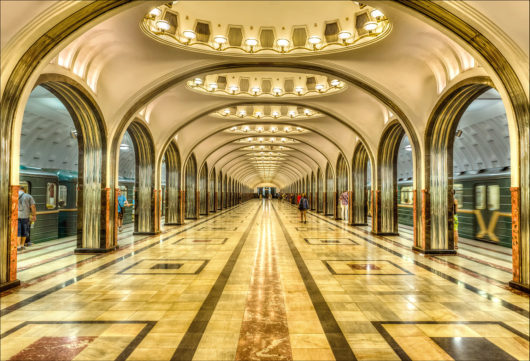
モスクワの地下鉄は全部で12路線あり、モスクワ・モノレール(13号線)と中央環状線(14号線)をあわせて、全部で14路線あるとも言えます。
モスクワ滞在中にお世話になるであろう地下鉄の路線図や鉄道駅の情報は、別記事のこちらでまとめていますが、この記事では 「地下宮殿」と呼ばれるモスクワ地下鉄駅の観光目的 に絞って紹介したいと思います。
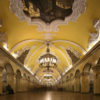
モスクワの地下鉄(概要)
モスクワの地下鉄の路線図です。
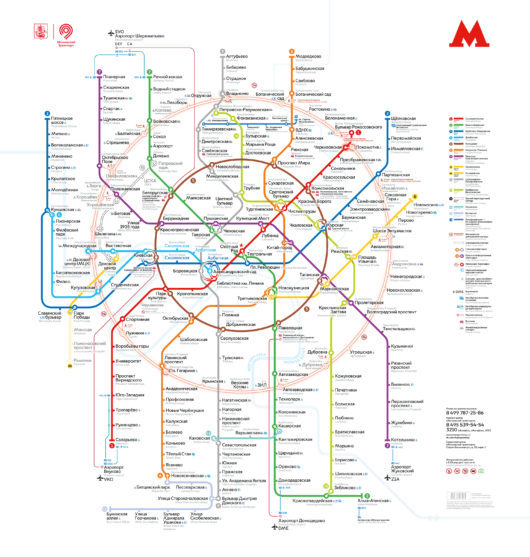
赤の広場やクレムリンのある中心部から、放射線状に延びているのが特徴的なモスクワ地下鉄。5号線の環状線もありますし、乗換していろんな場所に行けそうです。
後ほどモデルコースを紹介しますが、乗換駅がたくさんあるので、自分の行きたい駅を見つけて、好きな駅だけ回るのでもよいと思います。
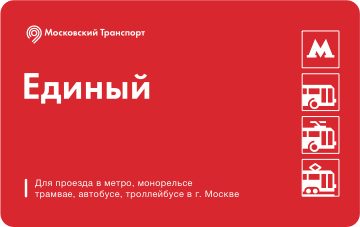
【運行時間】 始発:5時半ごろ 終電:翌1時ごろ (路線による)
【運賃】 55P(1回券) 110P(2回券) 747P(20回券)
自動券売機で1回券などを買って乗り込みます。
モスクワの地下鉄の観光コースプラン
以下の観光コースを紹介しているガイドを見つけましたので、参考までにこの場でも紹介したいと思います。

観光コースプランの駅情報
見学に行きたい駅(モデルルートの駅)の名前を地下鉄の路線図に赤枠の四角で囲ってみました。
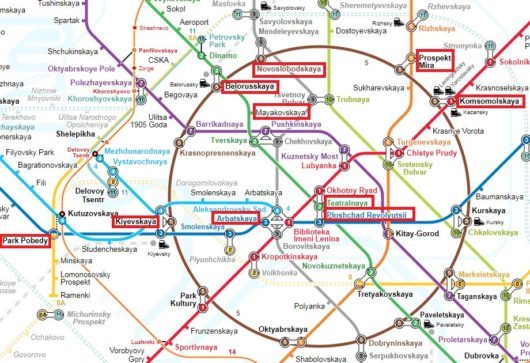
コムソモーリスカヤ駅から順番に巡っていくのもよいですし、No.6の Teatralnaya駅 とNo.7の Ploshchad Revolyutsii駅 は、乗り換え可能な駅ですので、赤の広場などの市内観光のついでに、この2つの駅の観光をしてしまうのもよいと思います。
まずは赤の広場・クレムリンなどの自分の観光に行きたい場所との優先順位で、行く駅・順番を決めてもよいと思います。
以下では、各駅の情報と駅の装飾の特徴を順にご紹介します。

IMAGES
VIDEO
COMMENTS
By Public Transportation: Take Line 3 to Gyeongbokgung station, exit 4. Then, take bus 1711, 1020, 7018, 7016, 7022, or 7212 to Hyoja-dong, and it's a short walk from there. Alternatively, you could walk through Gyeongbokgung Palace and exit out the back gate to find the Blue House as well.
All tours are in Korean. If you do not speak Korean, you can use the supplied audio tour guide for free. Photos of Cheong Wa Dae are only allowed at certain points on the tour. If you do not speak Korean, you will know when it is appropriate to take photos when the rest of the group pulls out their cameras. The entire tour lasts about 60 minutes.
14-29 Apr 2024. ₩95,000. king cherry blossoms are larger & denser. Cheong Wa Dae (or Blue House) is the official office and residence for Korean Presidents from 1948 to 2022. It was opened to the public for the first time in 74 years. Explore its compound and hike up Bugaksan Mountain (Southern) from behind the Blue House.
Getting to The Blue House. To get to the Blue House, the closest subway station is Gyeongbokgung Station (Line 3). You can also ride the Seoul Autonomous Bus, which has a stop outside Gyeongbok Palace, and then the route eventually takes you to the Hyojaro entrance of Cheongwadae. Note that these buses run from 9AM to 5PM.
7 to 8 hours. Free Cancellation. from. $280.20. Price varies by group size. 1 2. Book tours and tickets to experience Blue House (Cheong Wa Dae). Reserve a ticket for your trip to Seoul today. Free cancellation and payment options - Viator.
By official website. Cheong Wa Dae, also known as the Blue House, served as the official residence and office of the South Korean President for 74 remarkable years, from 1948 to 2022. Nestled amidst the scenic backdrop of Bugaksan Mountain in the heart of Seoul, this iconic complex witnessed pivotal moments in Korean history.
Walking Tour to Cheong Wa Dae (Blue House) + Gyeongbok Palace (Optional) Let's visit the place for past and present kings. Originally, Cheongwadae also known as the Blue House was used to be the residence and office for President of Korea. And it opens to the public from May 10, 2022 after we got the 15th President Yoon.
Cheongwadae, also known as the Blue House, is the Korean presidential residence. Located in central Seoul, visitors may visit Cheongwadae through an official tour. The presidential office, reception hall, and conference room are located in Cheongwadae's main building. The residence's grounds have a pond and gardens that reach to the foot of Bugaksan Mountain. Reservations for tours must be ...
The best ways to experience Blue House (Cheong Wa Dae) are: Seoul City Sightseeing Tour Including Gyeongbokgung Palace, N Seoul Tower, and Namsangol Hanok Village. Highlight Seoul Full Day Tour - Seoul Palace & N Seoul Tower. Seoul Hop-On Hop-Off Downtown Palace Course. Blue House (Cheong Wa Dae) - tours and tickets.
These Blue House, Seoul Guided tours are taking additional COVID-19 precautions: Morning 3-Hour Intro to Seoul Tour (Palace, Temple & More) Seoul: City Highlights Morning eBike Tour; Seoul: Gyeongbokgung Palace, Jogyesa Temple, and Cheongwadae; V.I.P Morning Pedicab Tour
The Basics. The Blue House is an ideal spot to appreciate traditional Korean architecture and learn about South Korea's tumultuous history. Seoul sightseeing tours often stop by the Blue House, allowing you to see the structure from the outside. City tours typically visit the Blue House along with other local attractions such as Gyeonbokgung ...
By car, explore Seoul in-depth, visiting sites such as Gyeongbokgung Palace, Cheongwadae (Blue House), Bukchon Hanok Village, and Gwangjang Market. Our guided car tour will allow you to discover Seoul's top attractions with the utmost efficiency and convenience. Tours last 4 hours in the morning.
The Blue House, also known as the Cheong Wa Dae, was the executive office and official residence of the President of the Republic of Korea. Located in the heart of Seoul, the Blue House serves as a symbol of the Korean government and a center of political power. In May 2022, the Blue House was opened to the public as a public park.
Located just past Gyeongbokgung Palace, the Blue House (Cheong Wa Dae) is the imposing official residence of South Korea's president. This lovely complex is built mainly in the traditional South Korean architectural style and tours are a great way to learn about the country's history and politics. Tours must be booked via online application ...
Presidential Blue House / Seoul. Visit Korea's Blue House which is the Korean president's house. Located next to Gyeongbokgung and other attractions around. Skip to content. About US; Top Memu. My account; Account. Login $ 0.0 0. ... Tour time: 10:00, 11:00, 14:00, 15:00. Information.
Cheong Wa Dae, or Blue House, is the official residence of the President of the Republic of Korea. ... Cheong Wa Dae Blue House Hours. Tours are available at 10:00, 11:00, 14:00, and 15:00 from September 17 to June 30. ... Exclusive partnerships and deals make stays in Seoul more affordable, freeing up funds for attractions, dining, and other ...
President Youn Posun (1960-62, 4th presidential term) first used Cheong Wa Dae to describe its office and residence. As of May 10, 2022 the Blue House is open to the public because president Yoon Suk-yeol moved its official office to Yongsan. Now, you can tour the grounds of the Blue House and explore areas what were not open to the public before.
It's best to start the Blue House tour from the main gate. The whole tour takes about an hour and a half at a leisurely pace. ... 90, and his two friends from Seoul, who visited the Blue House on Tuesday, bring a cane or walking stick. Jeong Man-seok, 90, visiting the Blue House on Tuesday with his walking stick. [YIM SEUNG-HYE]
A bird's-eye view of the Blue House in central Seoul on May 15, 2022, shortly after it opened to the public as soon as President Yoon Suk Yeol took office. [YONHAP] ... touted as the most beautiful garden inside the Blue House. A tour program that allows visitors to learn about 208 different species of trees inside the Blue House will also ...
MOSCOW TOURS What you can see in Moscow. MOSCOW DAY TRIPS Get out of Moscow and take a relaxing trip to some of these places. ST. PETERSBURG Some of the sights to see in Petersburg. LAKE BAIKAL TOURS Hiking and trekking around the world's deepest lake in the heart of Siberia RUSSIAN DIGS
何游天下. The Red Square is located in the center of Moscow, Russia, is a famous square in Russia. It is also the venue for major events in Moscow and is one of the famous landmarks in Moscow. There is also Vasili Ascension Cathedral nearby. . St. Basil's Cathedral. เด็กน้อยในมอสโก. Very beautiful, give full marks.
Toll Free 0800 011 2023 ... Day tours. Tours by Region
The University of Chicago, the University of Tokyo, and Seoul National University established a partnership to train a quantum workforce and strengthen their collective competitiveness in the ...
2018FIFAワールドカップ ロシア:モスクワの地下鉄駅めぐりモデルコース(自分歩き). 「地下宮殿」と呼ばれるモスクワの地下鉄駅は豪華で一見の価値あり!. ぜひ観光したいので、どの順番で回るかなどを調べてみた. モスクワの地下鉄は、共産主義時代の ...